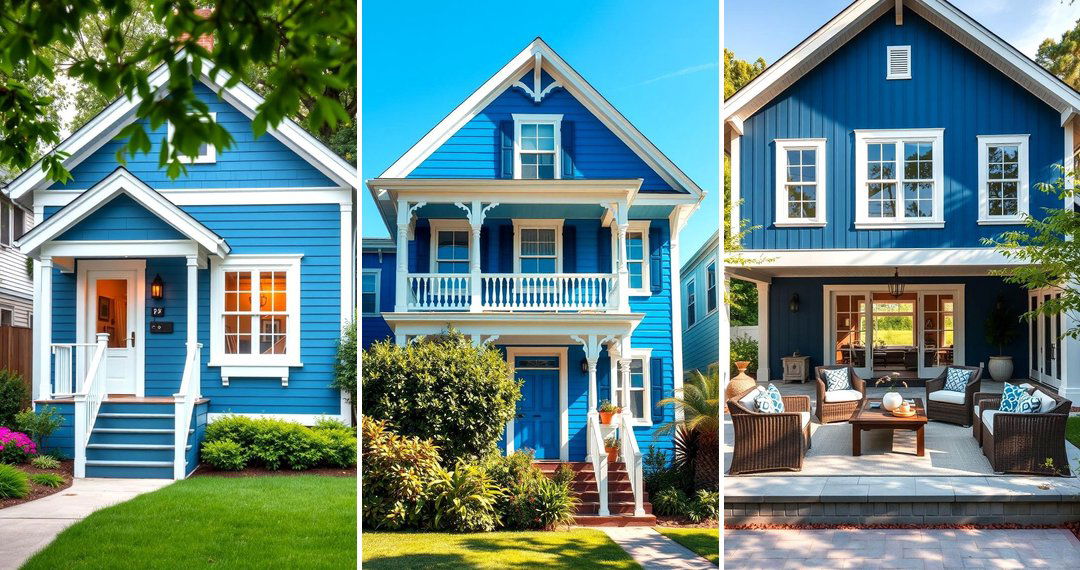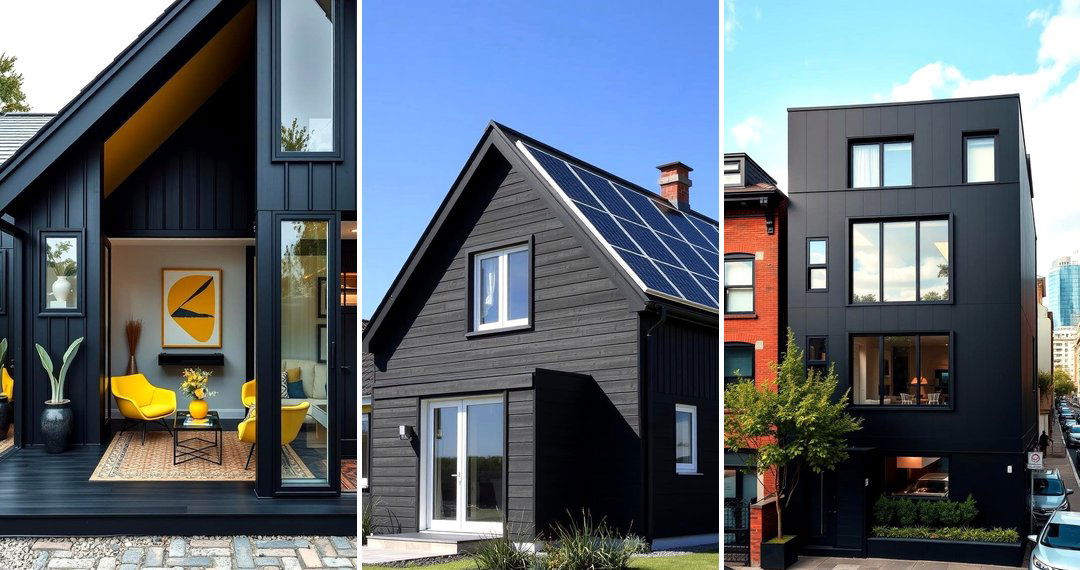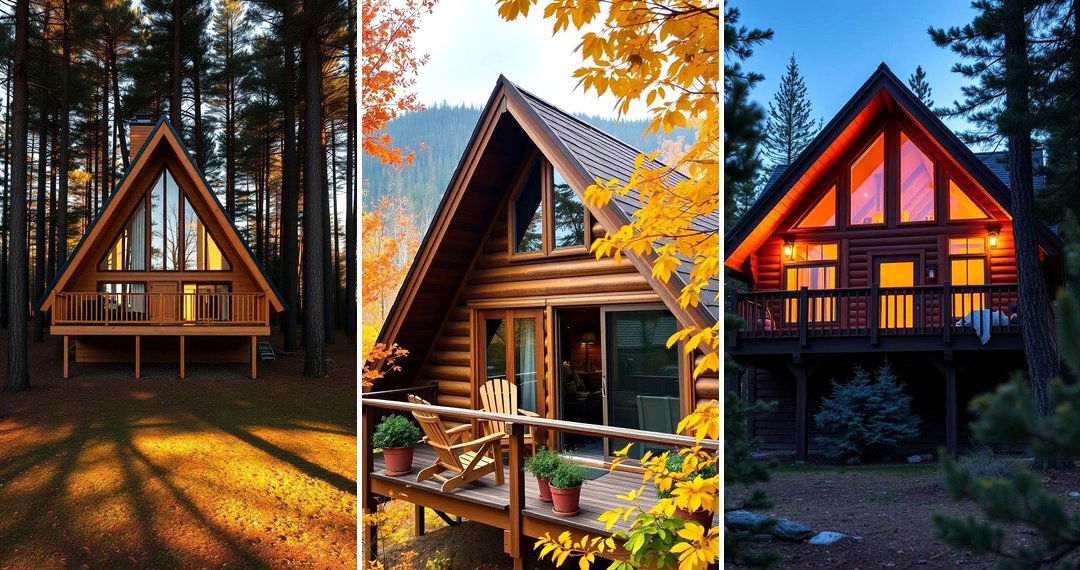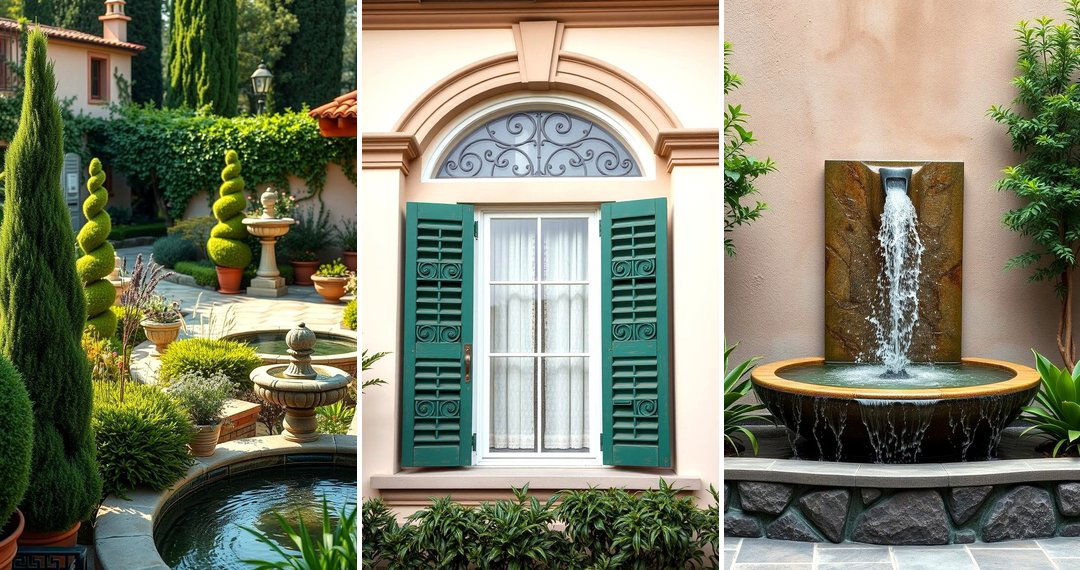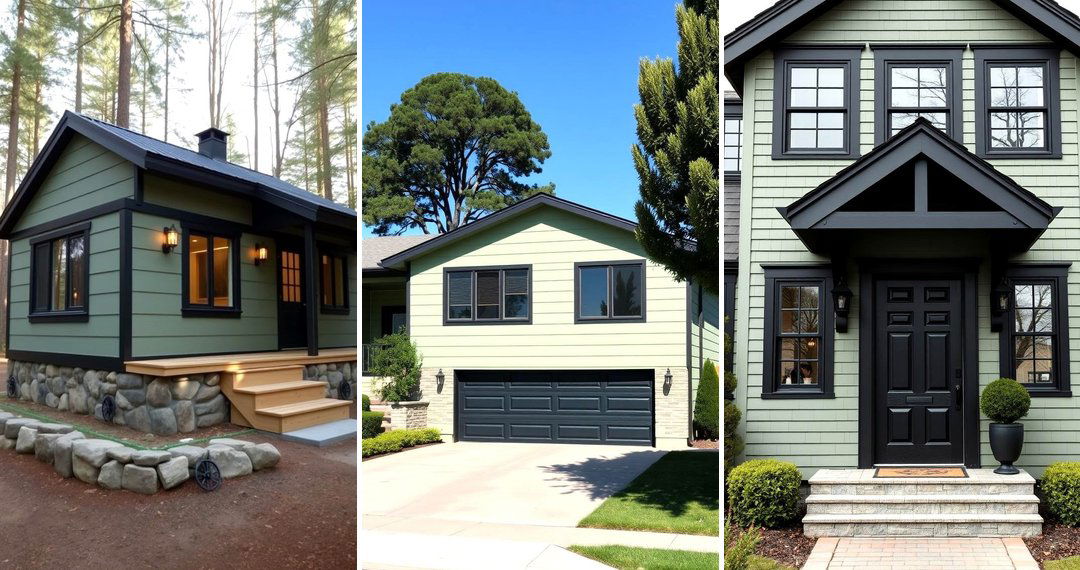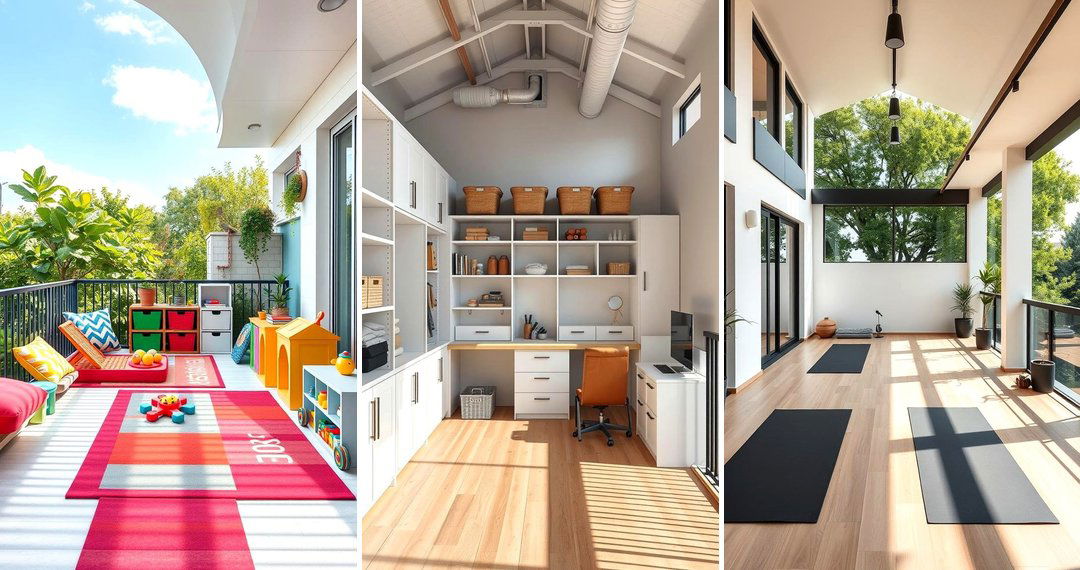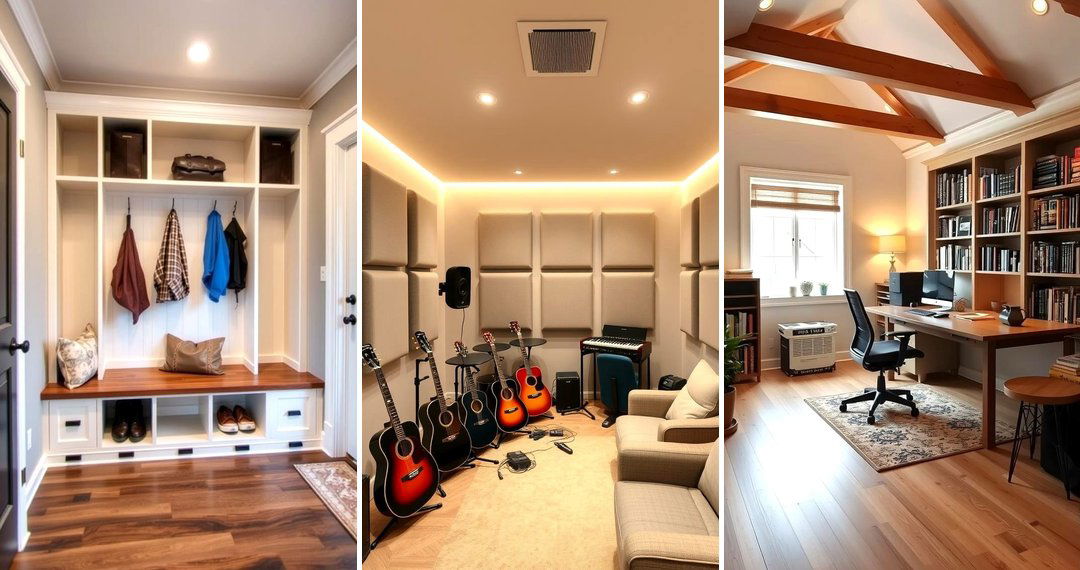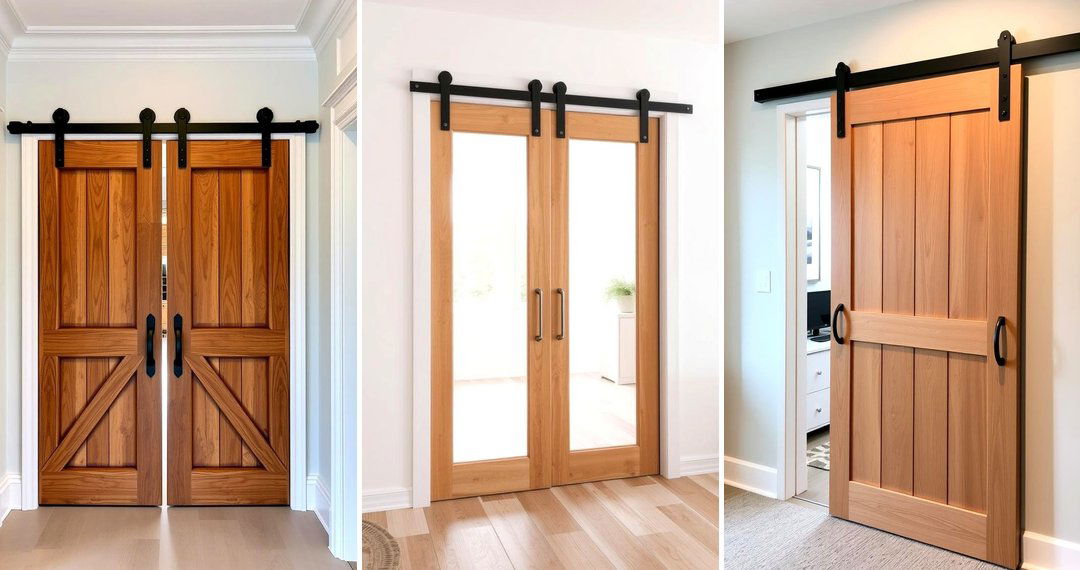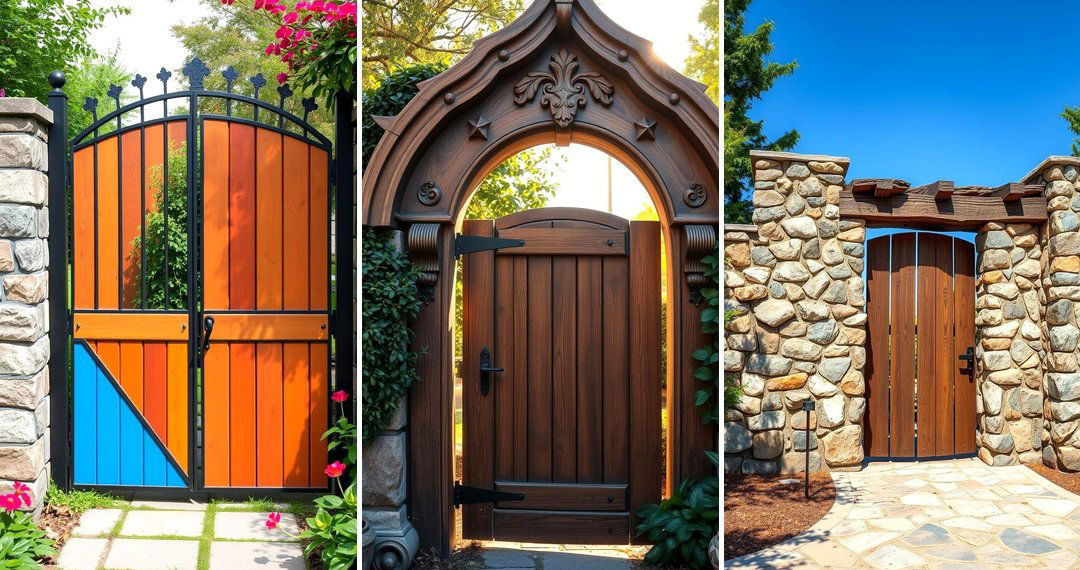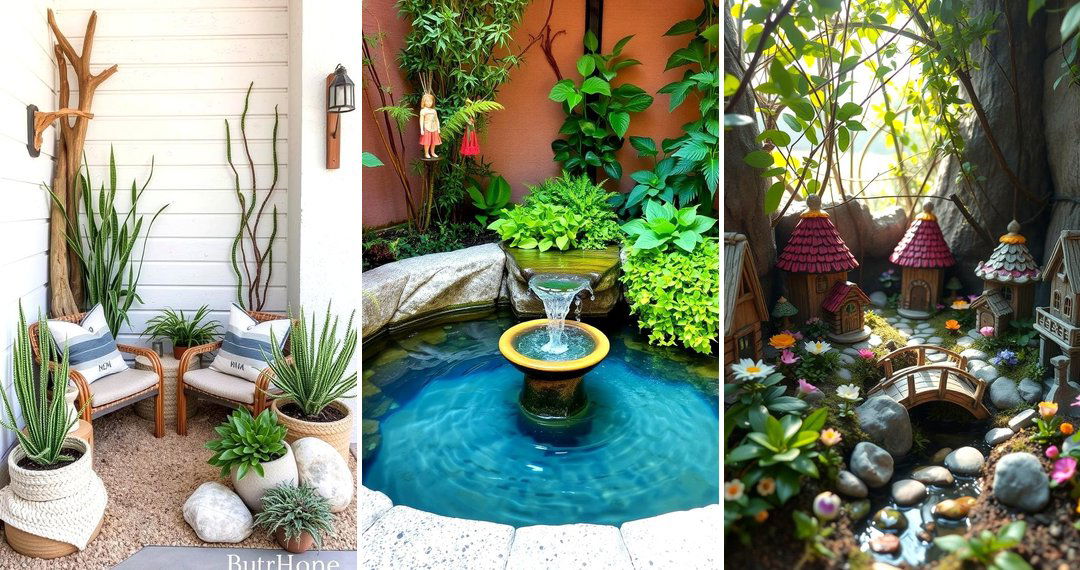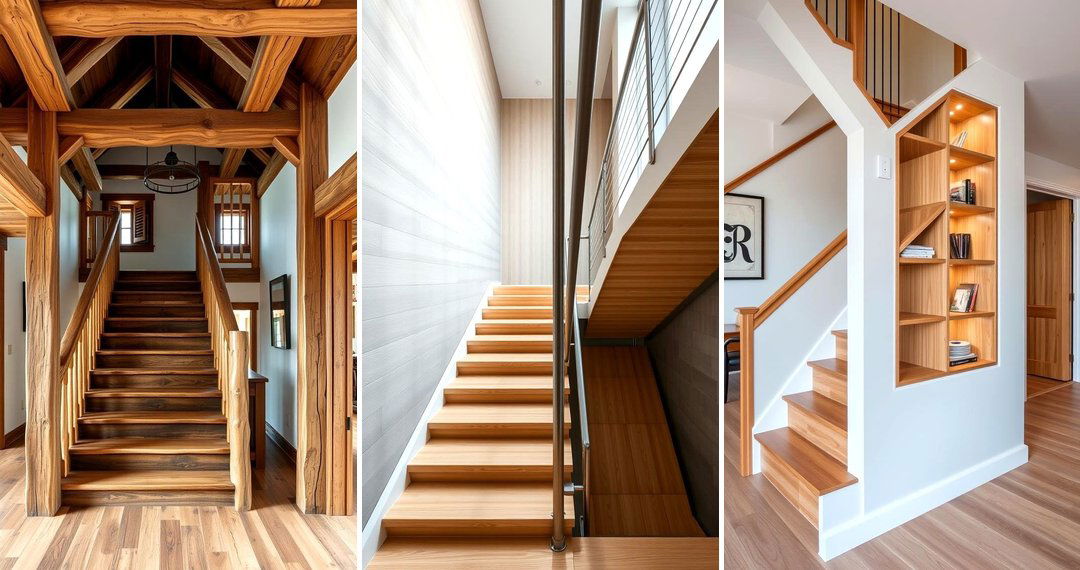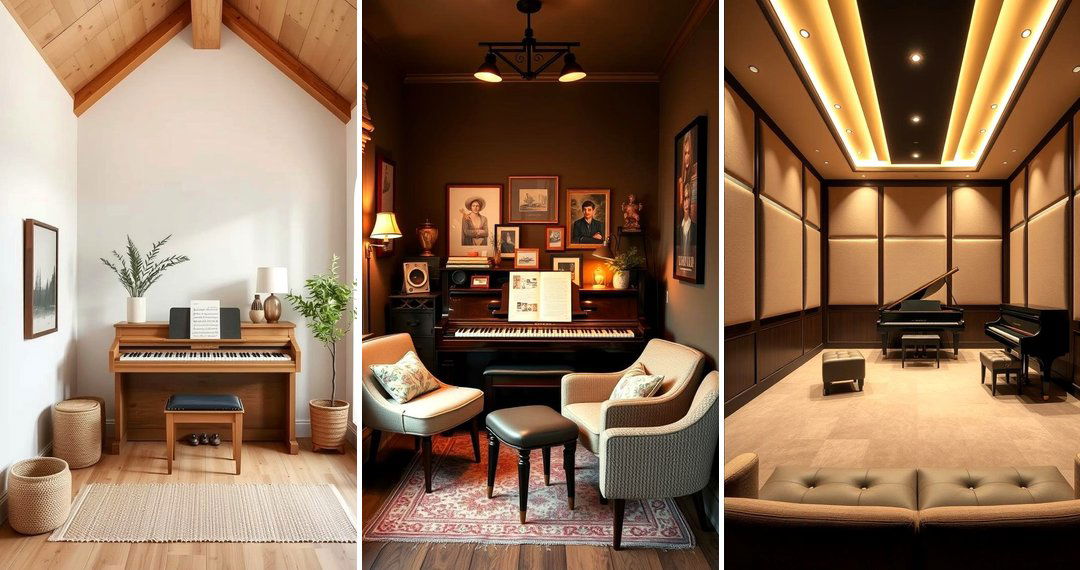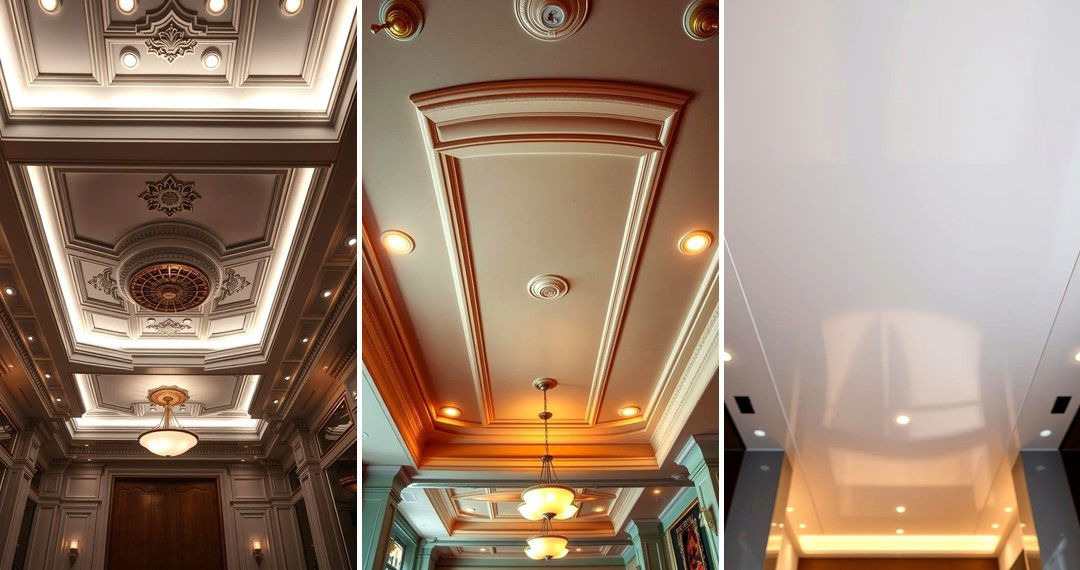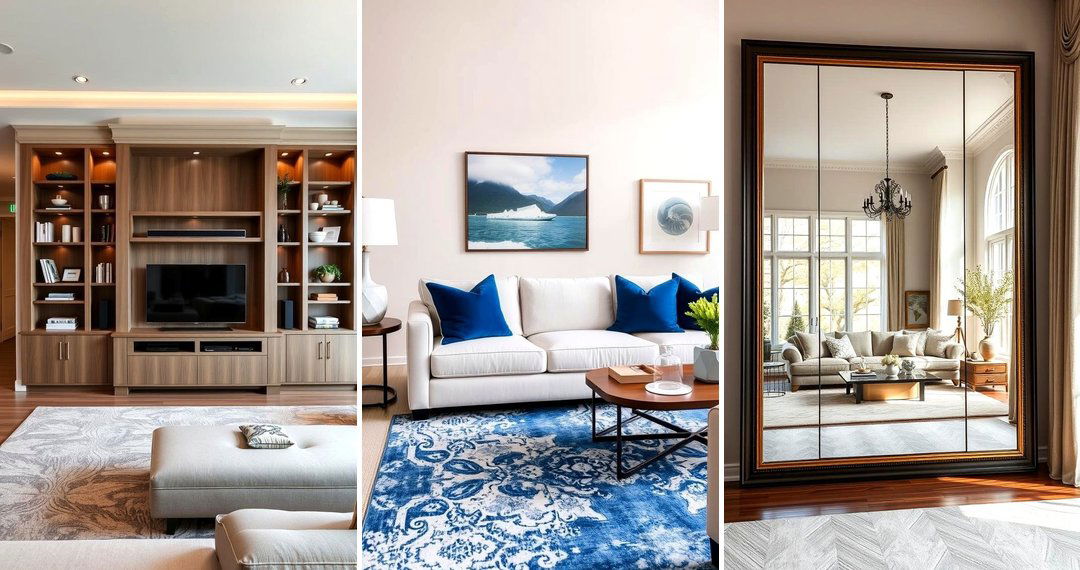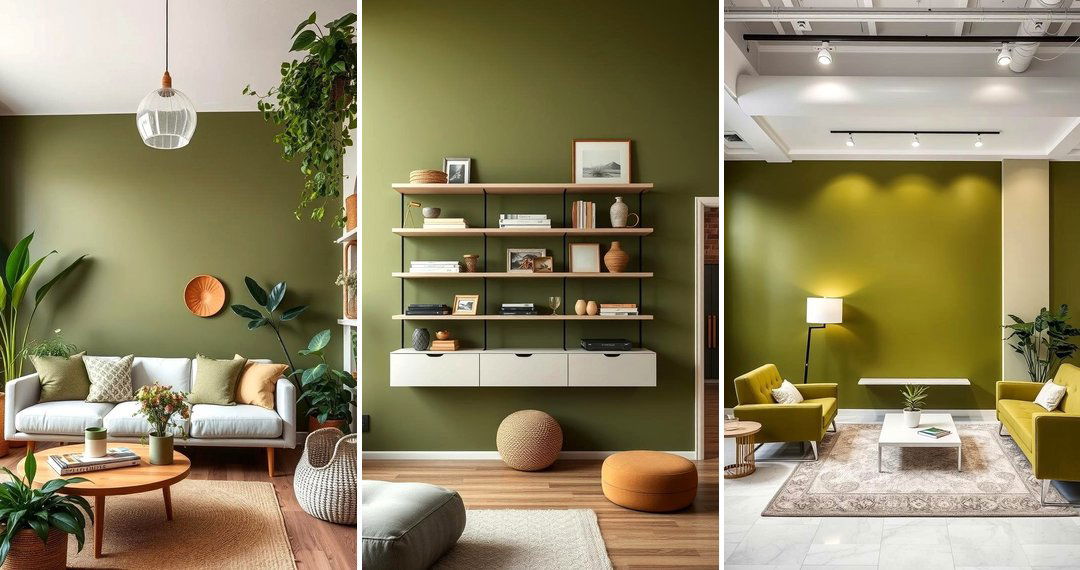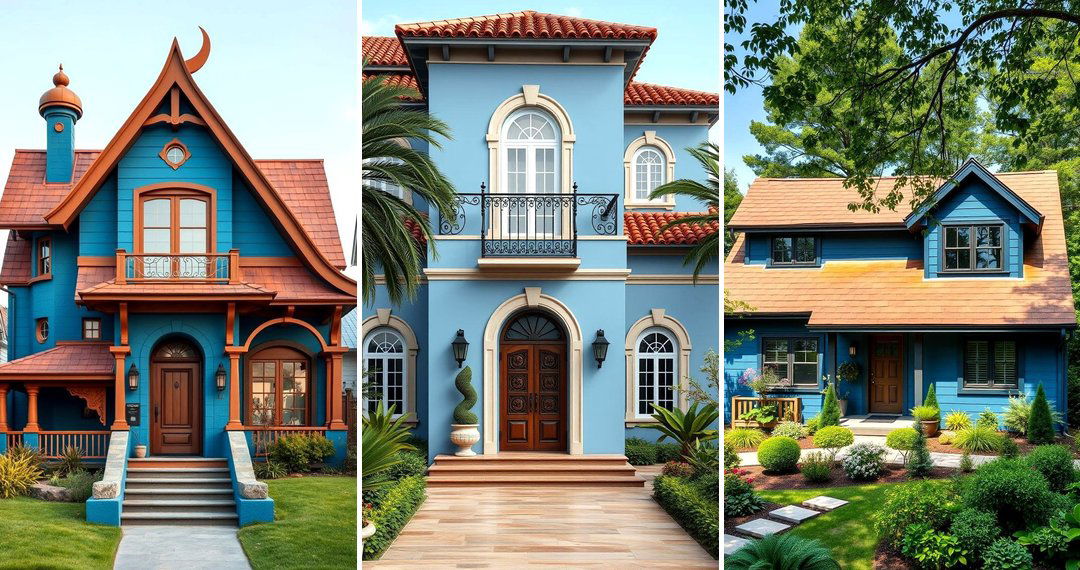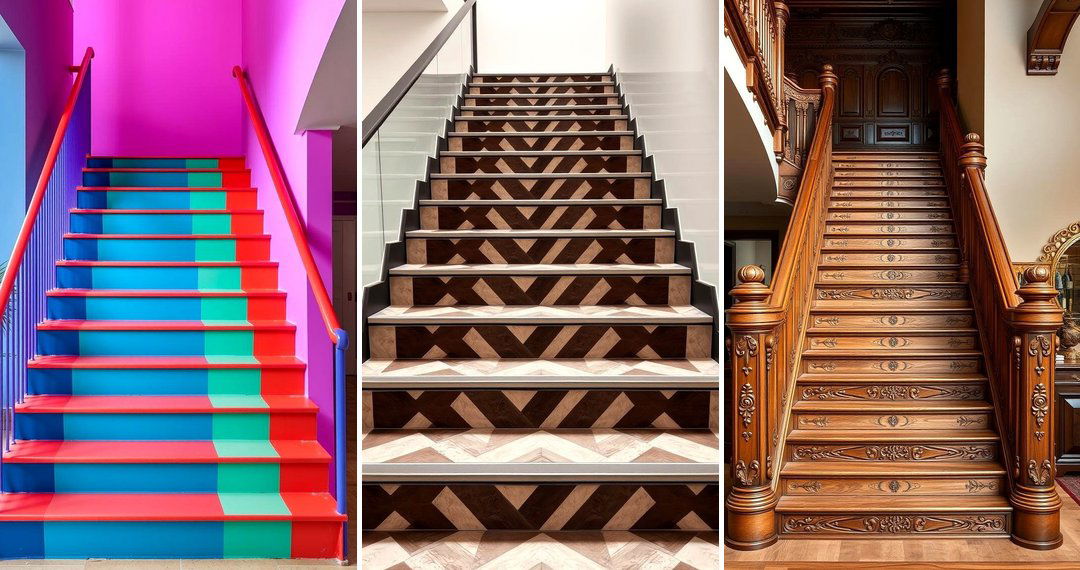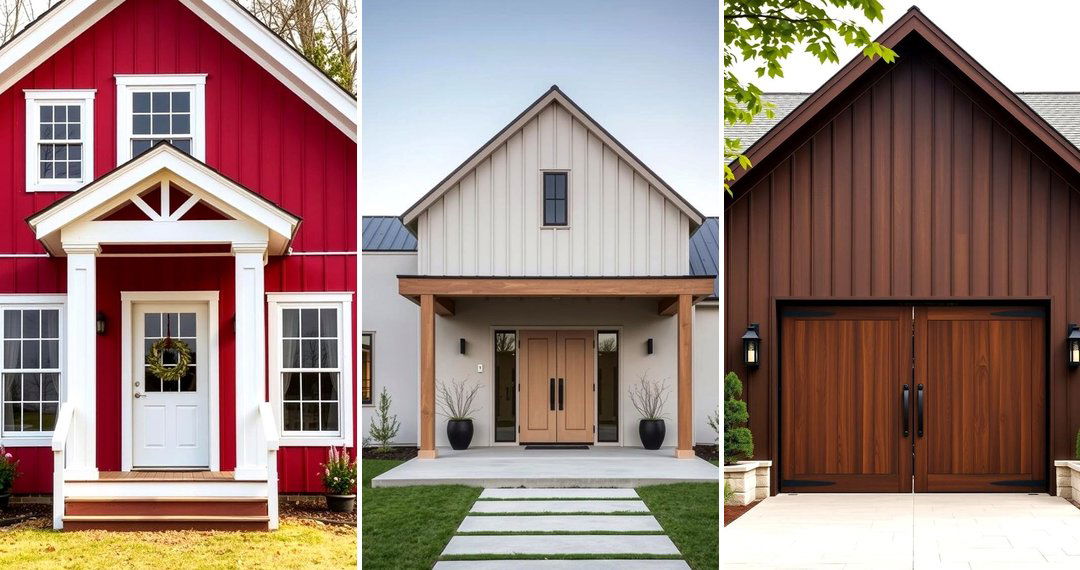A journey into 24 Tiny House Design Ideas invites you to explore creative, efficient, and inspiring ways to maximize small spaces. Embracing the charm of compact living, these ideas blend innovation with practicality to create environments that are both aesthetically pleasing and highly functional. Every concept is designed to enhance comfort, streamline storage, and bring a unique personality to your tiny home. Discover practical tips and motivational insights that empower you to transform limited space into a beautiful, efficient sanctuary. Let these tiny house design ideas inspire your next small-space adventure.
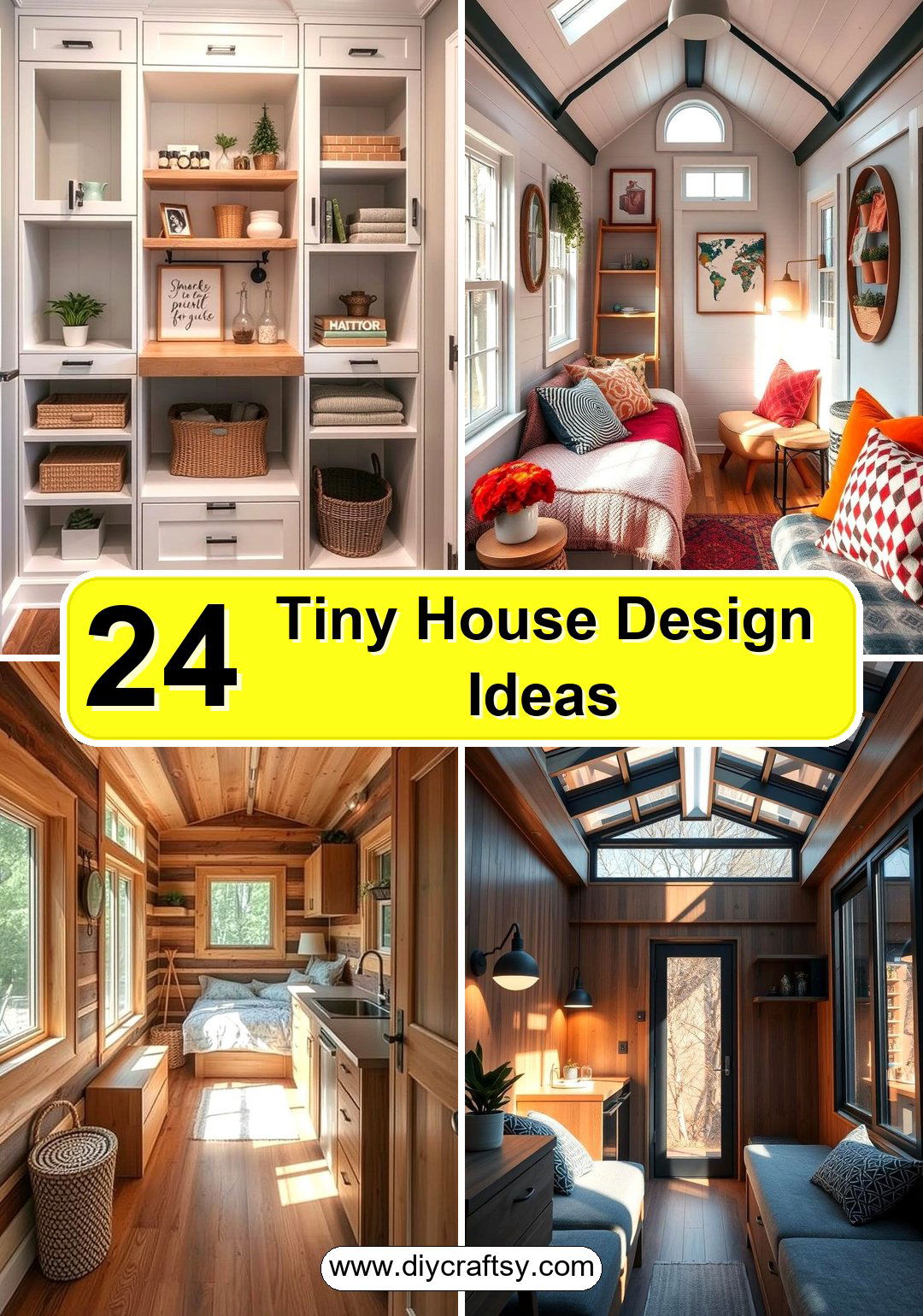
1. Space-Saving Furniture Solutions
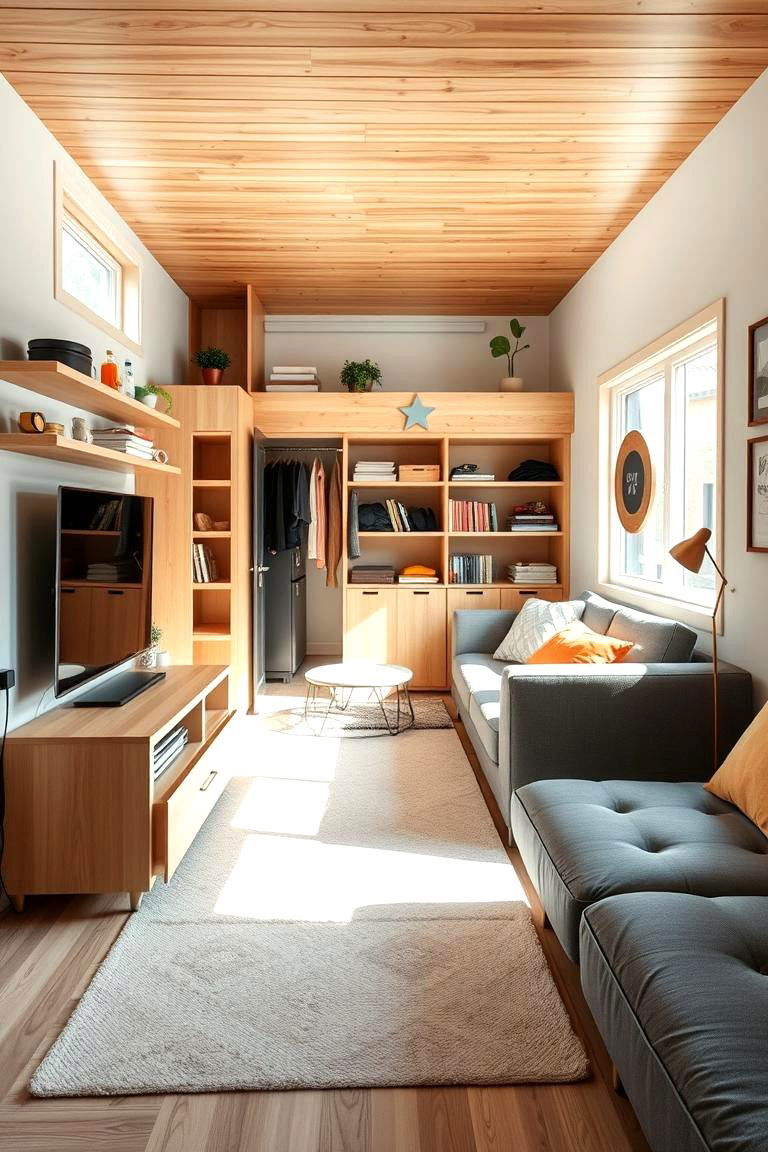
A clever approach to tiny house design focuses on space-saving furniture solutions that transform your living area into a multifunctional haven. This idea emphasizes versatile pieces that double as storage units and seating areas, enabling you to maximize every square inch. Innovative designs include foldable tables, convertible sofas, and retractable beds that blend seamlessly into the overall decor. By incorporating these solutions, homeowners can enjoy a clutter-free space that promotes comfort and functionality, making everyday living simpler and more enjoyable while maintaining a modern and stylish look.
2. Multifunctional Living Areas
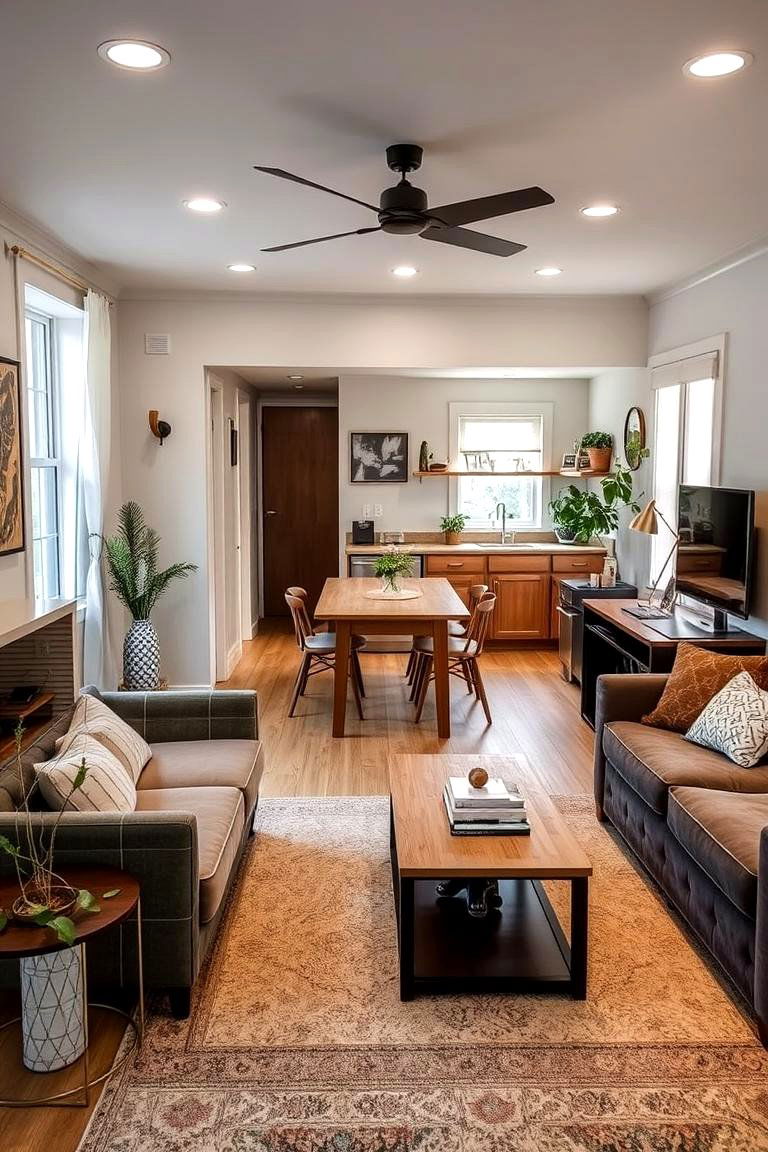
Imagine a home where every space serves more than one purpose. Multifunctional living areas in tiny houses allow you to combine dining, relaxing, and working zones into one cohesive environment. This design concept uses flexible furniture, like fold-out desks and modular seating, to create adaptable rooms that adjust to your daily needs. The use of smart layouts and minimal clutter ensures that the space feels open and inviting. Embracing multifunctionality not only increases functionality but also enhances the overall aesthetic appeal, making your tiny house a dynamic, welcoming retreat.
3. Sustainable Building Materials
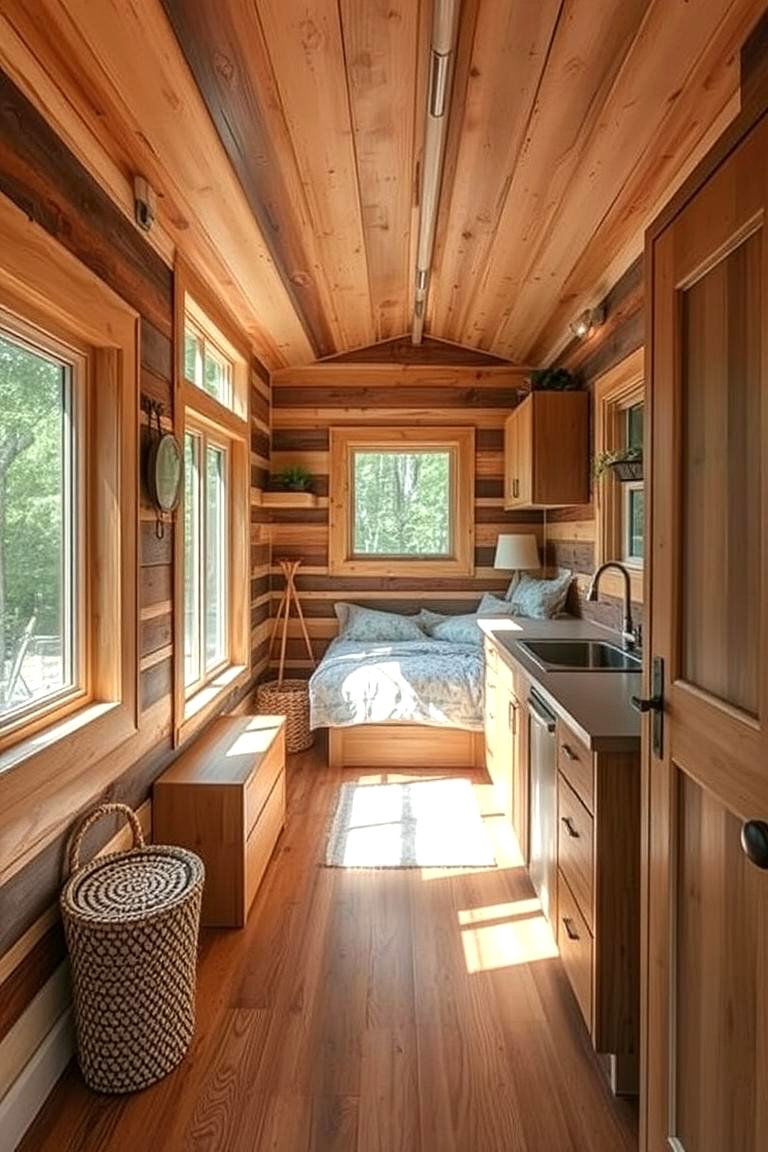
An eco-friendly approach to tiny house design incorporates sustainable building materials that promote environmental responsibility. This idea highlights the use of reclaimed wood, recycled metals, and natural insulation options that reduce waste and energy consumption. Integrating these materials not only supports a greener lifestyle but also adds a unique, natural charm to your home. By focusing on durability and minimal environmental impact, sustainable building materials create a comfortable living space that feels connected to nature. Embrace this green trend to craft a home that is both stylish and sustainable, reflecting a commitment to a healthier planet.
4. Compact Kitchen Design
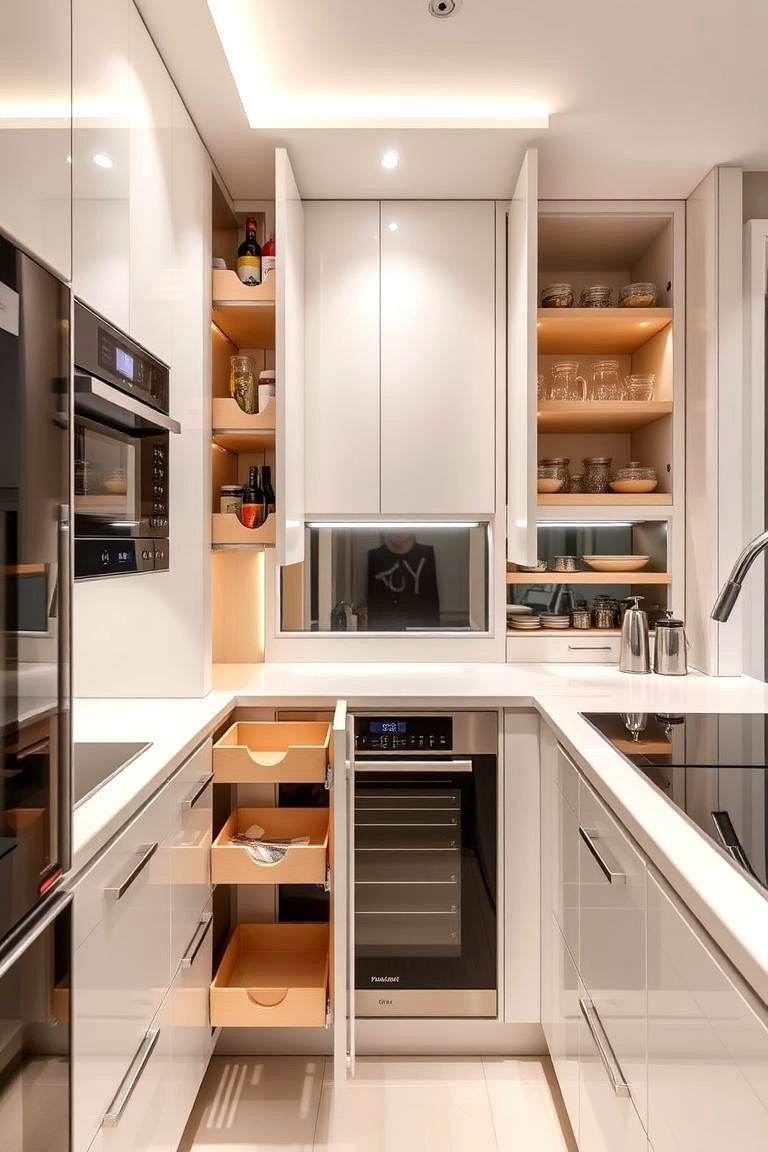
A well-designed compact kitchen can transform a tiny house into a culinary haven. This idea emphasizes smart storage solutions, streamlined countertops, and efficient layouts that make meal preparation a breeze. Incorporating pull-out pantries, integrated appliances, and multi-use surfaces ensures every inch is optimized. The design promotes a sense of openness, despite limited space, by utilizing light colors and reflective surfaces. With practical planning and creative solutions, a compact kitchen can become the heart of your tiny home, offering both functionality and style for everyday cooking adventures and social gatherings.
5. Minimalist Interior Aesthetics
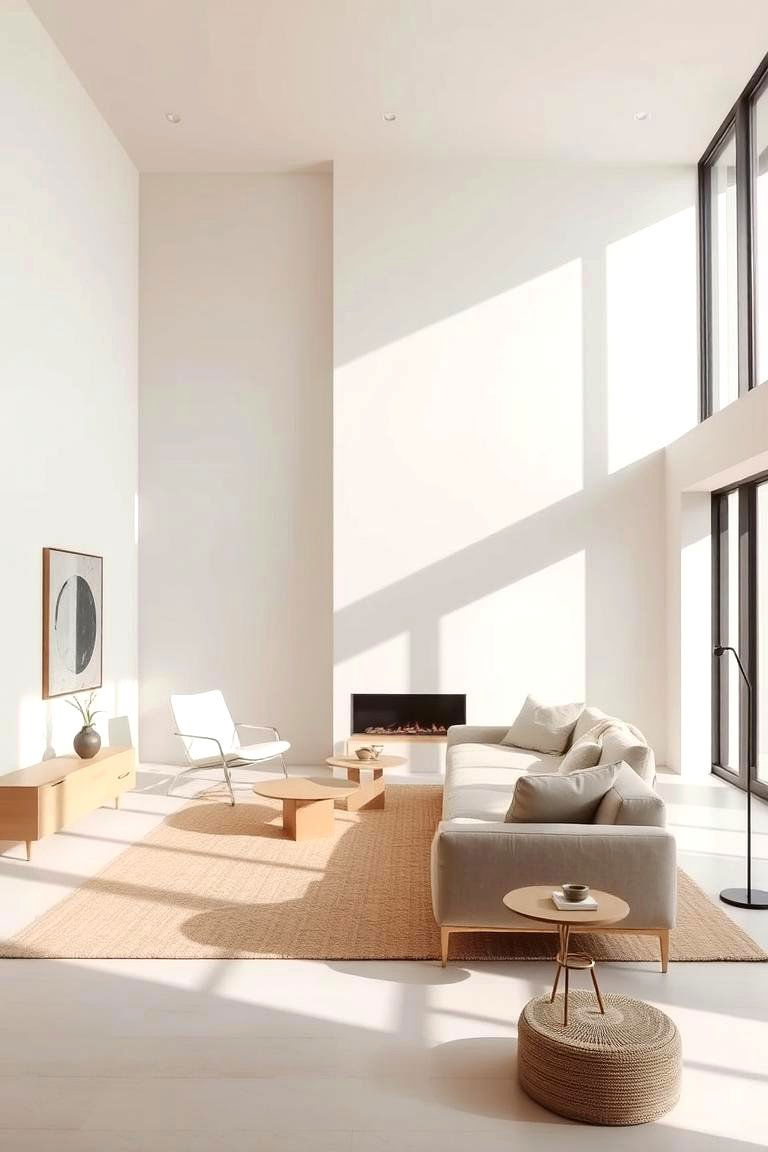
A minimalist interior aesthetic in tiny houses emphasizes simplicity, clarity, and a clutter-free environment. This design approach relies on neutral color palettes, clean lines, and streamlined furniture to create a serene space. By reducing decorative excess, each element is thoughtfully selected to contribute to a peaceful and functional home. The minimalist style enhances natural light and makes the space feel larger, ensuring that every item has a purpose. Embracing minimalism helps cultivate a calm, organized atmosphere that encourages mindful living and promotes overall well-being in your tiny sanctuary.
6. Smart Storage Solutions
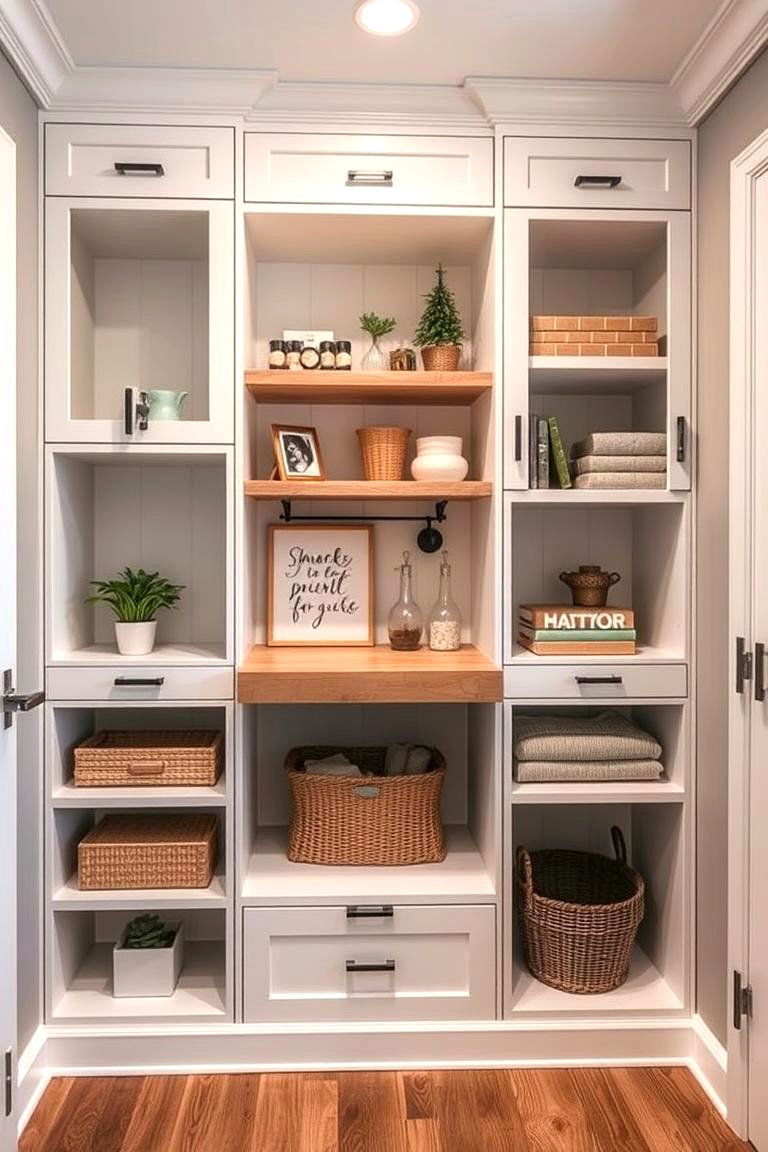
Smart storage solutions are essential for maximizing every corner of a tiny house. This idea focuses on creative ways to hide clutter and make use of vertical and hidden spaces. Incorporating built-in shelves, under-bed compartments, and multi-functional furniture, these designs keep essentials organized and easily accessible. The approach reduces visual noise, contributing to a spacious feel despite the small footprint. Practical yet stylish, smart storage ideas blend functionality with aesthetics, ensuring that your tiny home remains tidy and efficient. With careful planning, every nook becomes an opportunity to enhance your living environment.
7. Creative Loft Spaces
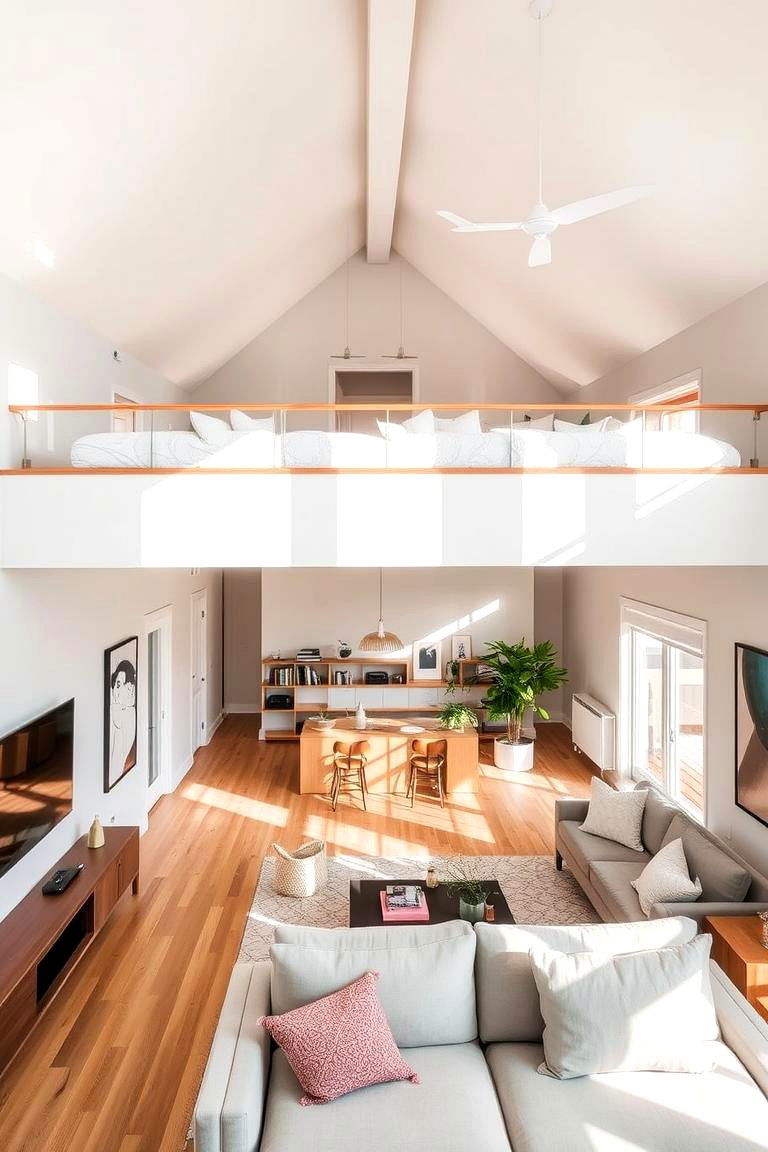
Creative loft spaces in tiny houses provide an innovative solution for adding extra living or sleeping areas without sacrificing floor space. This design concept involves elevating a portion of the home to create a cozy, private retreat that is both stylish and practical. By using lightweight materials and clever access designs such as ladders or spiral staircases, loft spaces can serve as reading nooks, workspaces, or additional bedrooms. The elevated platform offers a sense of separation from the main living area, creating a personal haven while maintaining an open, airy feel throughout the home.
8. Outdoor-Indoor Flow
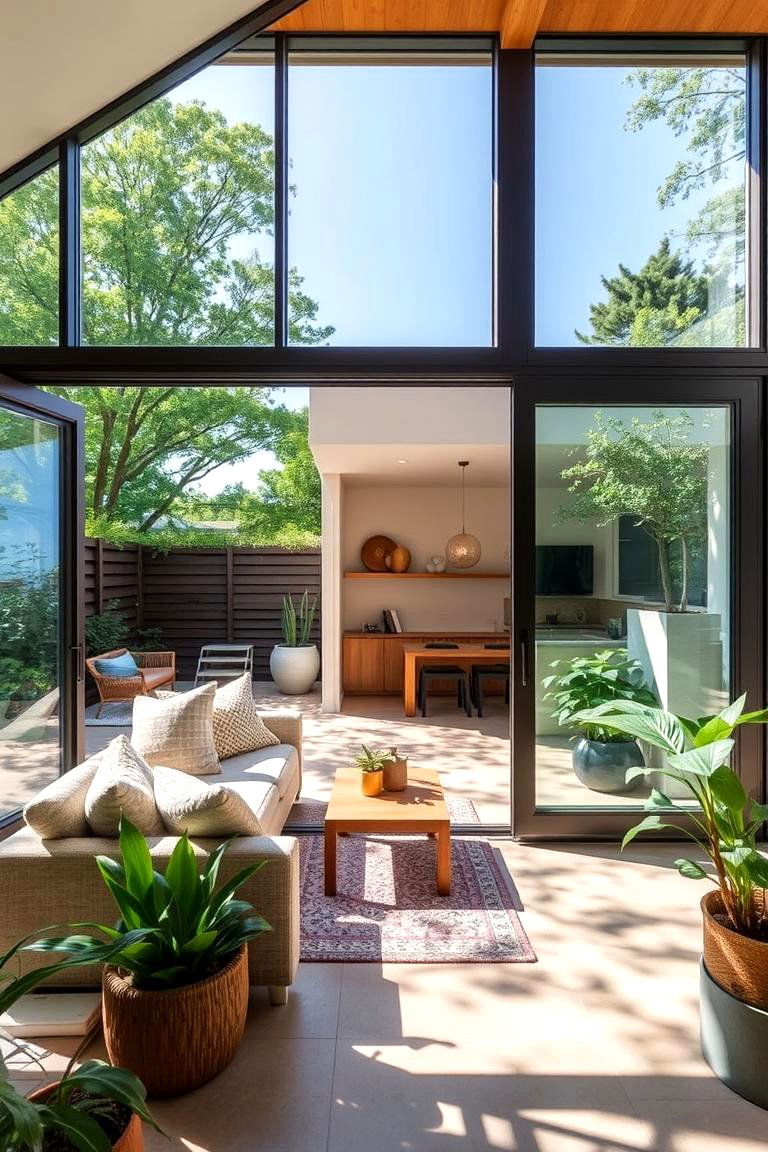
An outdoor-indoor flow seamlessly connects interior living spaces with the natural beauty outside. This design idea incorporates large windows, sliding glass doors, and integrated patios to blur the lines between the inside and outside. The result is a harmonious blend that allows natural light and fresh air to enhance the home's ambiance. By using durable, weather-resistant materials and cohesive design elements, you create a space that is both inviting and practical. Embracing outdoor-indoor flow not only maximizes usable space but also enriches your connection with nature, elevating your tiny house experience.
9. Efficient Lighting Design
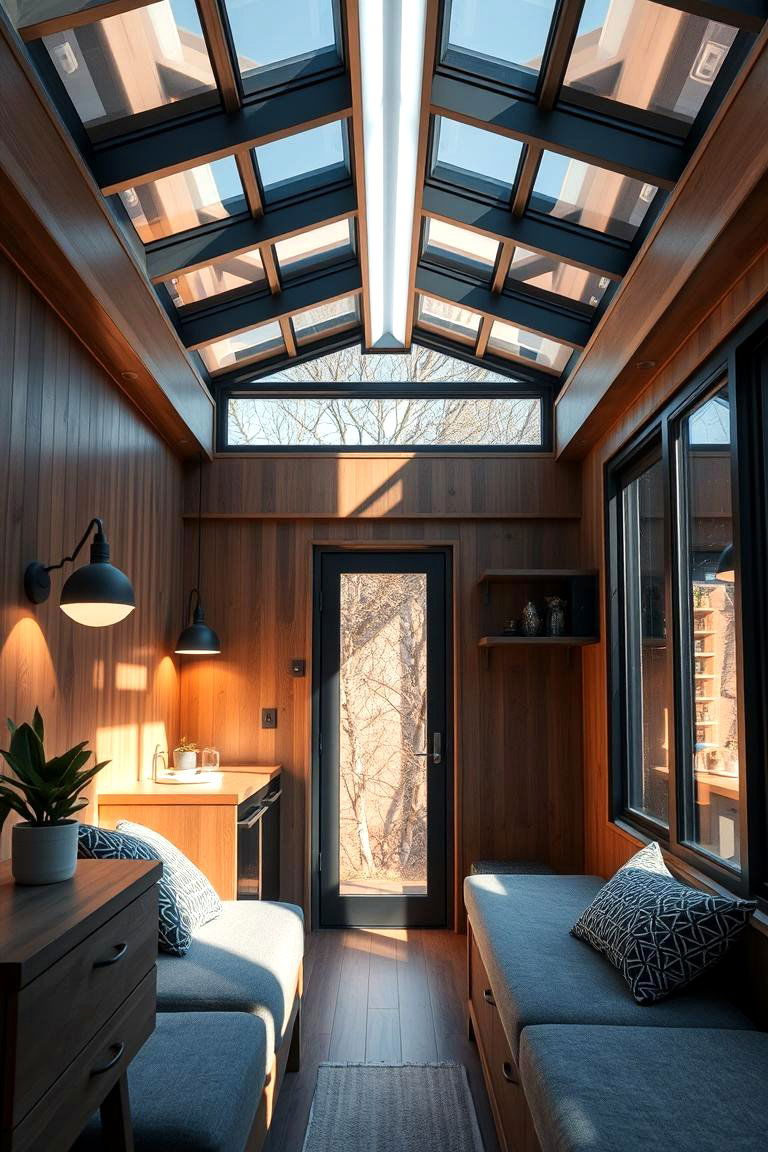
Efficient lighting design in tiny houses plays a crucial role in enhancing the mood and functionality of small spaces. This idea advocates for the use of energy-efficient LED lighting, strategically placed to maximize brightness and create ambiance. Incorporating natural light through well-placed windows and skylights further elevates the space. Layered lighting, combining overhead fixtures, task lighting, and accent lights, ensures every area is well-lit while adding depth and warmth. With a focus on sustainability and practicality, efficient lighting design transforms a compact space into a bright, welcoming environment that feels both modern and comfortable.
10. Green Energy Integration
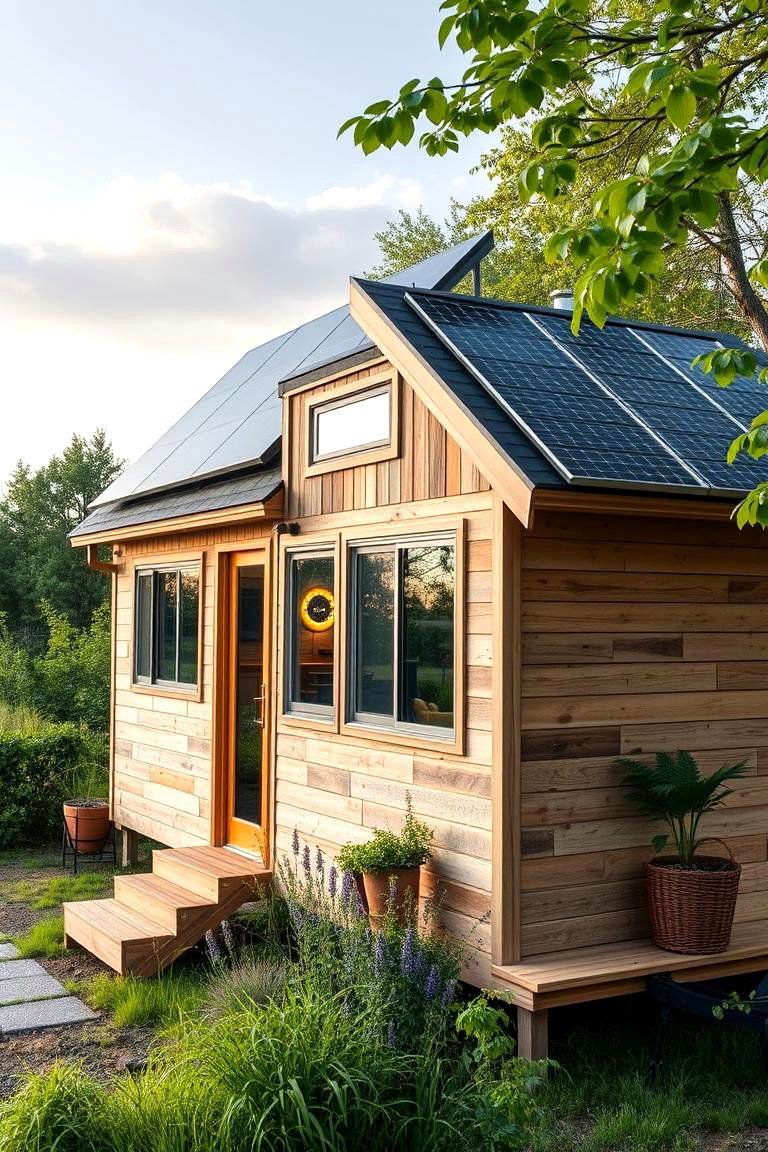
Green energy integration transforms tiny houses into sustainable havens by utilizing renewable resources. This idea promotes the incorporation of solar panels, wind turbines, and energy-efficient appliances to reduce utility costs and environmental impact. With thoughtful planning, these eco-friendly systems can seamlessly blend with the overall design, providing a reliable source of clean energy. Embracing green energy not only lowers your carbon footprint but also creates a self-sufficient home that thrives on sustainability. The combination of technology and natural elements makes for a harmonious living environment that supports both modern convenience and environmental responsibility.
11. Modular Wall Systems
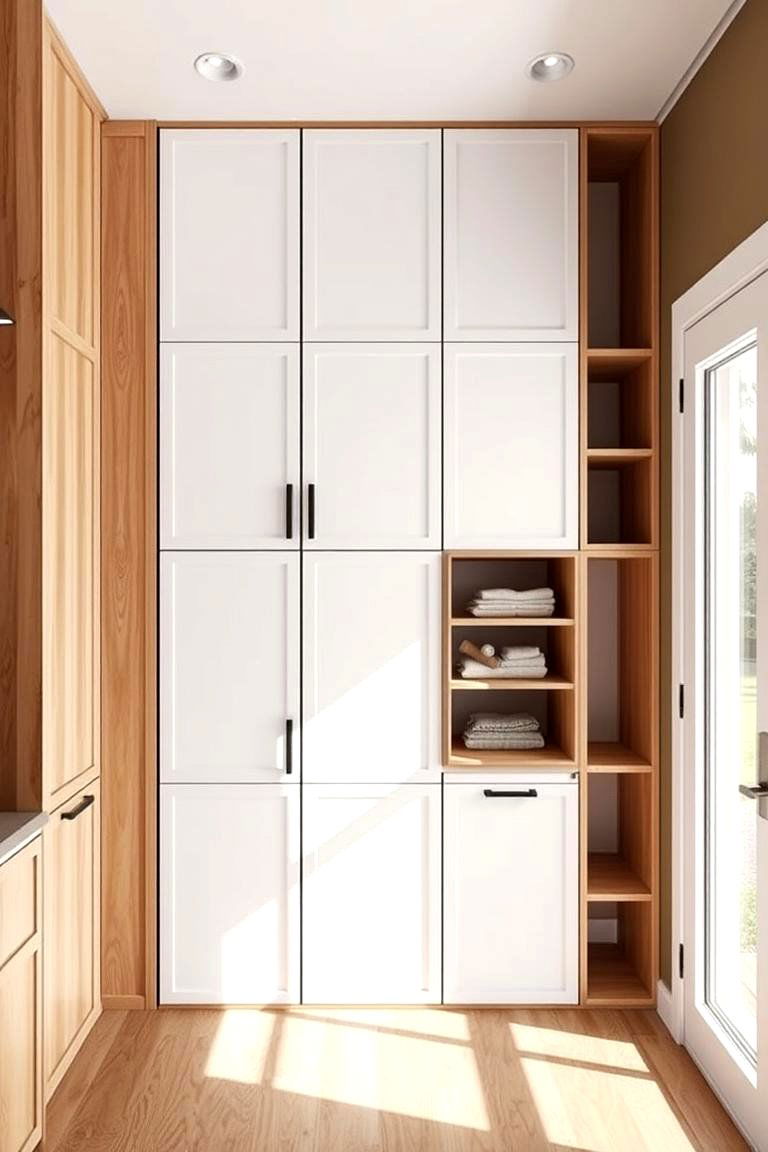
Modular wall systems offer a flexible solution for customizing the layout of a tiny house. This design idea involves installing movable panels and partitions that allow you to reconfigure rooms based on daily needs. The system enhances privacy and functionality by creating adaptable spaces for work, rest, or entertainment. With a focus on versatility, modular walls can incorporate hidden storage and built-in shelving, further optimizing the area. The ability to easily modify your living space encourages creativity and personalization, making it a practical solution for those seeking a dynamic, ever-changing home environment.
12. Hidden Storage Compartments
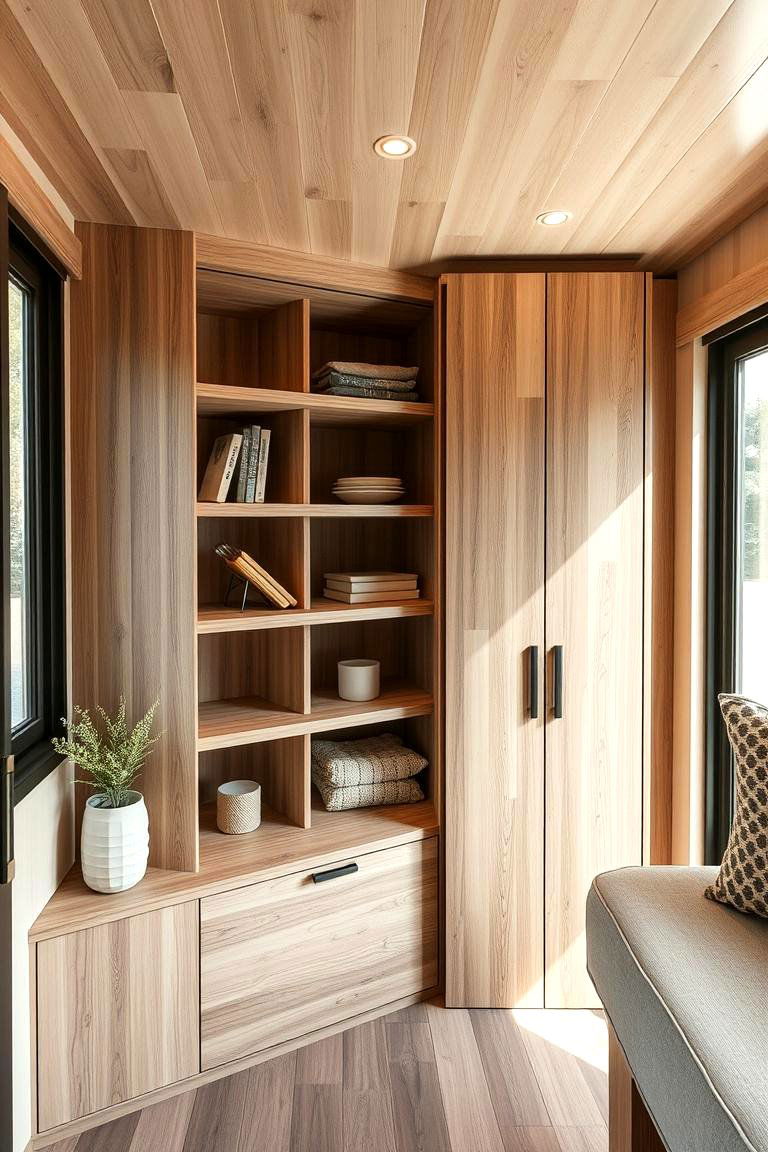
Hidden storage compartments provide a clever solution to maximize functionality without sacrificing style. This idea focuses on integrating concealed spaces within walls, stairs, and furniture to keep belongings out of sight yet easily accessible. By designing built-in storage that blends seamlessly with the decor, you achieve a clean, uncluttered look. These innovative features not only free up valuable floor space but also add a sense of intrigue and smart design. Incorporating hidden compartments encourages organization and efficiency, ensuring that every item has its designated place in your tiny house, enhancing overall comfort and practicality.
13. Multi-Purpose Furniture
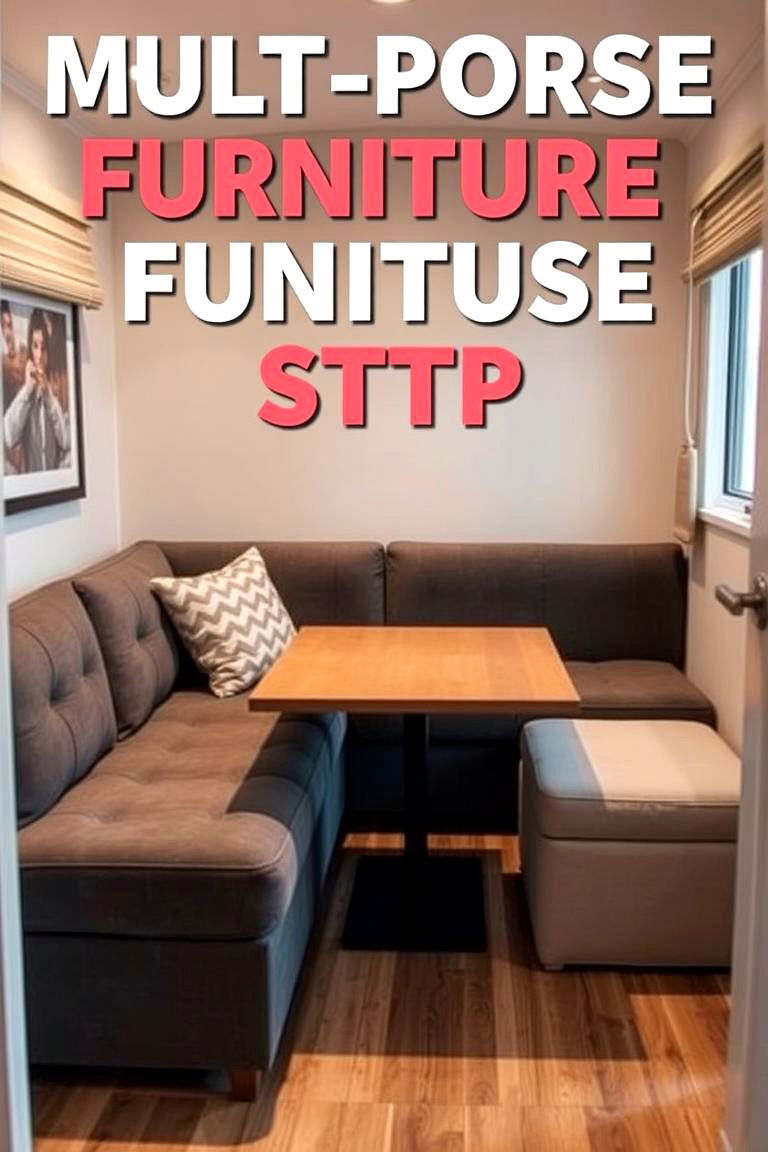
Multi-purpose furniture is a cornerstone of tiny house design that brings versatility to every room. This idea emphasizes pieces that serve dual functions, such as sofa beds, extendable dining tables, and storage ottomans. By selecting furniture that adapts to various needs, you can effortlessly switch from hosting guests to creating a cozy family space. The innovative design reduces clutter and maximizes usability, ensuring that each item contributes to both comfort and functionality. Embracing multi-purpose furniture transforms a limited space into a dynamic and adaptable living environment that supports a flexible lifestyle.
14. Zen-Inspired Interiors
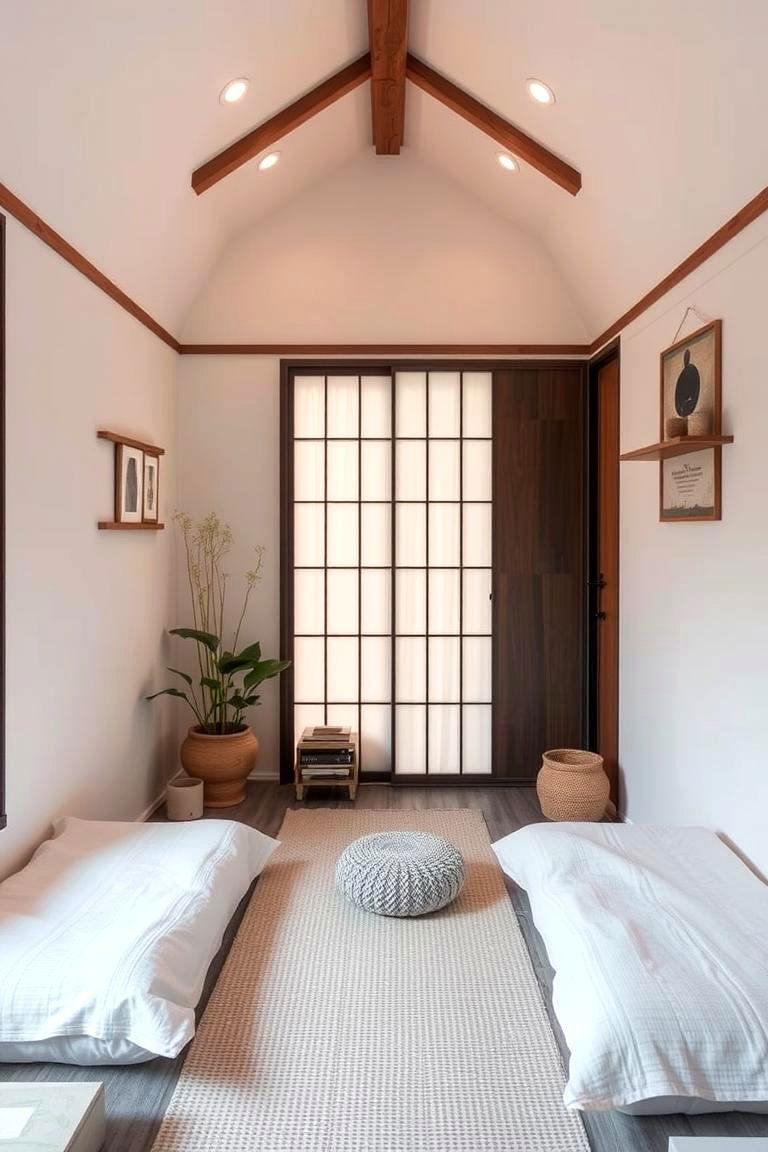
Zen-inspired interiors create a tranquil atmosphere in tiny houses by focusing on balance, simplicity, and natural elements. This design idea incorporates clean lines, muted color palettes, and minimalist decor to evoke a sense of calm and mindfulness. The use of natural materials like bamboo, stone, and soft textiles enhances the peaceful ambiance. By reducing clutter and emphasizing negative space, zen-inspired interiors foster a serene living environment that supports relaxation and mental clarity. This approach not only elevates the aesthetic appeal of your home but also creates a sanctuary for rejuvenation and inner peace.
15. Open-Plan Layouts
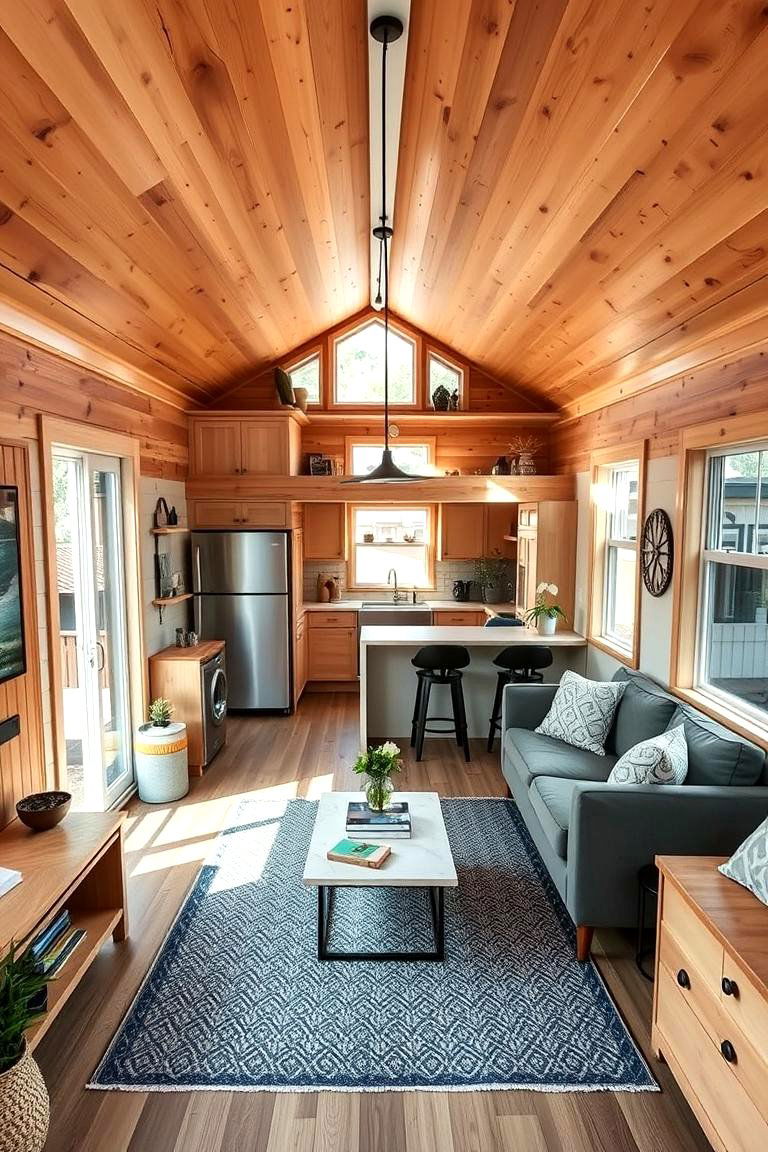
An open-plan layout in tiny houses eliminates unnecessary walls to create a seamless flow between spaces. This idea champions a spacious, airy feel by combining the kitchen, living, and dining areas into one integrated environment. The design promotes natural light and flexibility, allowing you to rearrange furniture and define areas as needed. With strategic zoning and multifunctional furniture, the open-plan concept maximizes every inch while maintaining a cohesive look. This approach encourages a sense of community and togetherness, making your tiny house feel larger and more connected without compromising on style or functionality.
16. Natural Ventilation Systems
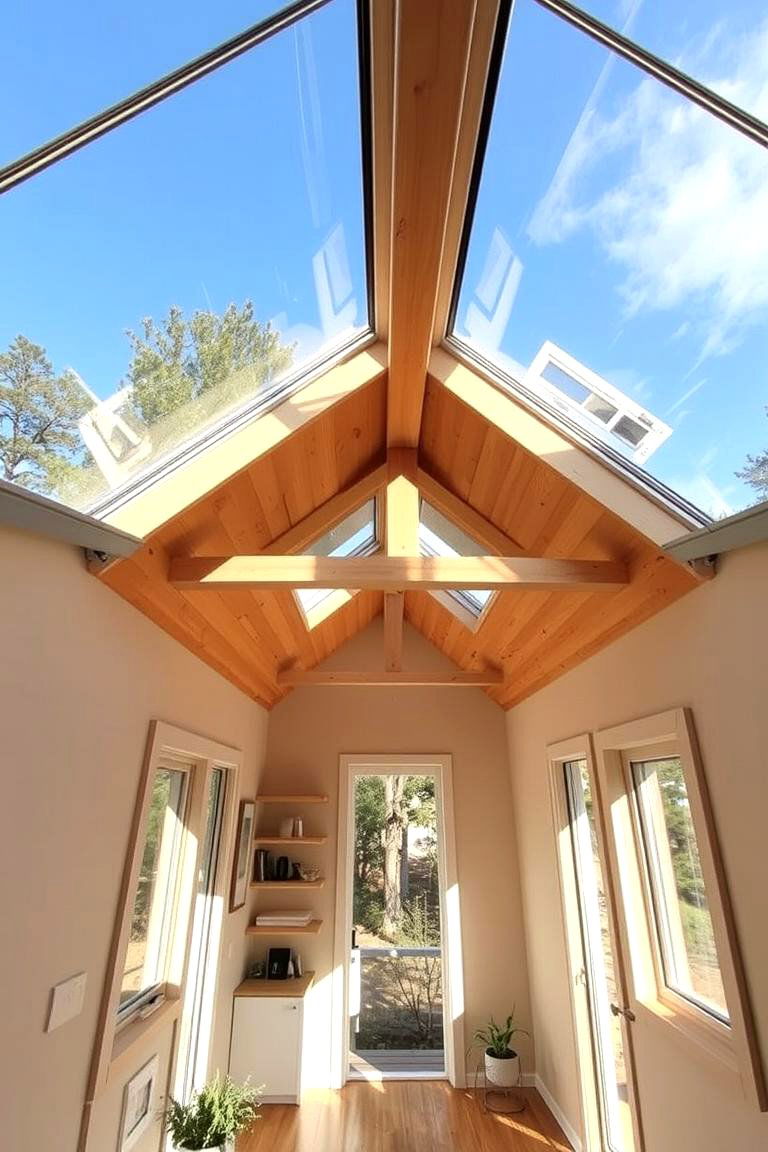
Natural ventilation systems in tiny houses ensure a fresh and healthy living environment. This design idea focuses on harnessing airflow through strategically placed windows, vents, and skylights to circulate cool air and reduce reliance on mechanical systems. By incorporating cross-ventilation and passive cooling techniques, you can maintain comfortable temperatures year-round. The design not only supports energy efficiency but also creates a pleasant ambiance by inviting nature indoors. Embracing natural ventilation helps reduce energy costs and promotes a sustainable lifestyle while enhancing the overall comfort and livability of your compact home.
17. Bold Color Accents
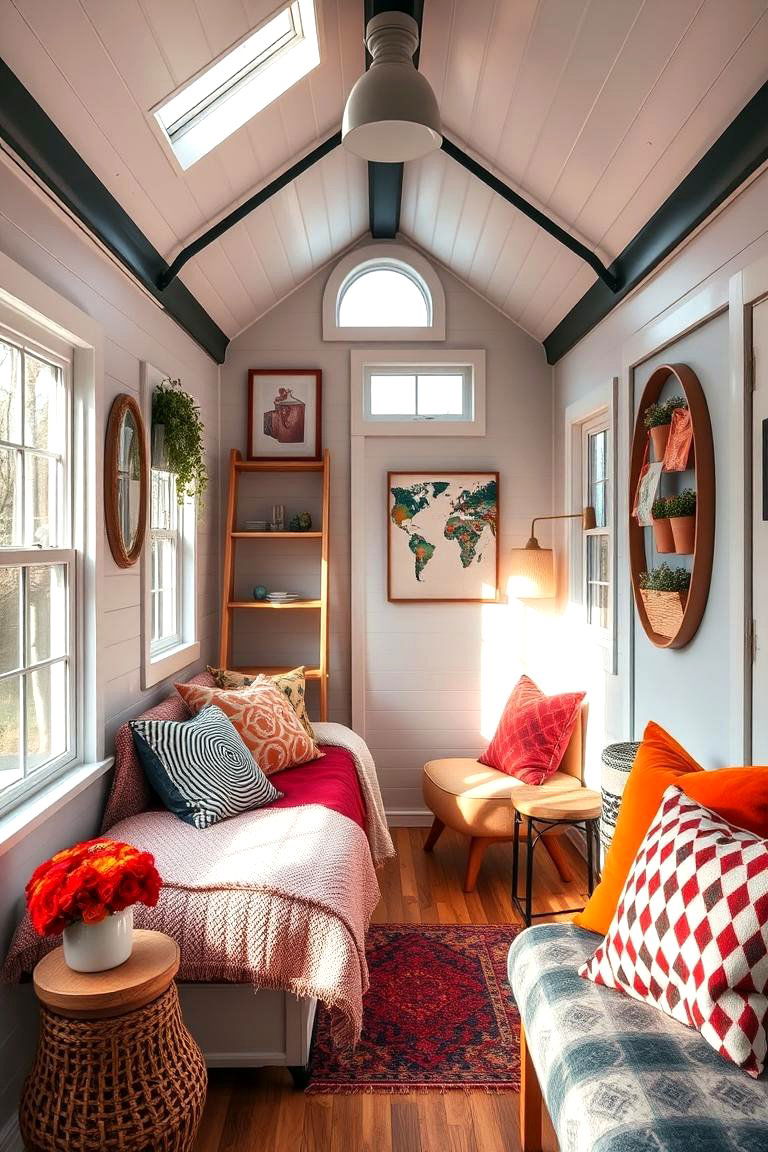
Bold color accents add personality and vibrancy to tiny house interiors without overwhelming limited space. This design idea encourages the use of striking hues on walls, furniture, or decor elements to create focal points and elevate the visual appeal. Integrating colorful details in an otherwise neutral palette creates contrast and energy, inspiring creativity and liveliness. These accents can be easily updated or swapped out to reflect seasonal moods or personal tastes. With thoughtful placement, bold colors enhance the overall design by infusing the space with warmth and character while still maintaining a cohesive and modern look.
18. Flexible Room Dividers
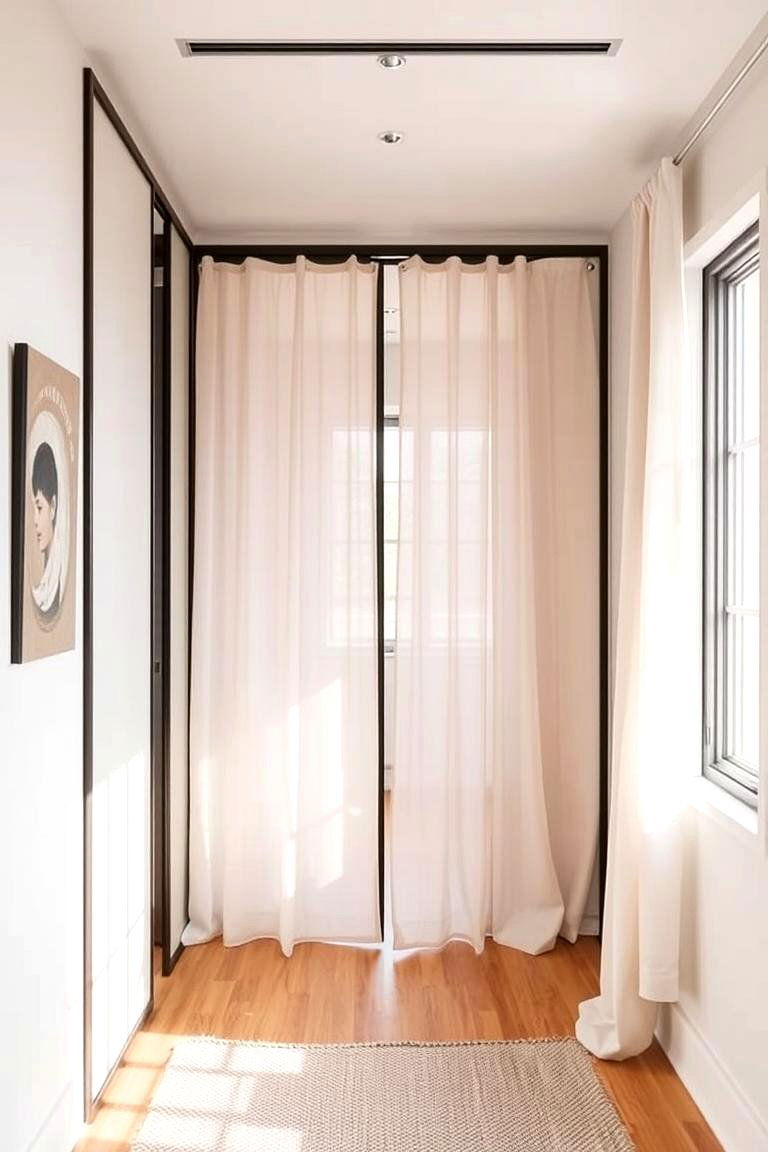
Flexible room dividers offer an innovative solution to define distinct areas within an open tiny house layout. This idea focuses on using lightweight, movable partitions that can be repositioned to create privacy or separate functional zones. Options such as sliding panels, curtains, or foldable screens allow you to tailor your space to suit your needs throughout the day. These dividers enhance versatility without sacrificing the open feel of your home. By combining practicality with style, flexible room dividers provide an elegant way to manage space, ensuring that each area serves its purpose while maintaining an airy, integrated design.
19. Cozy Reading Nooks
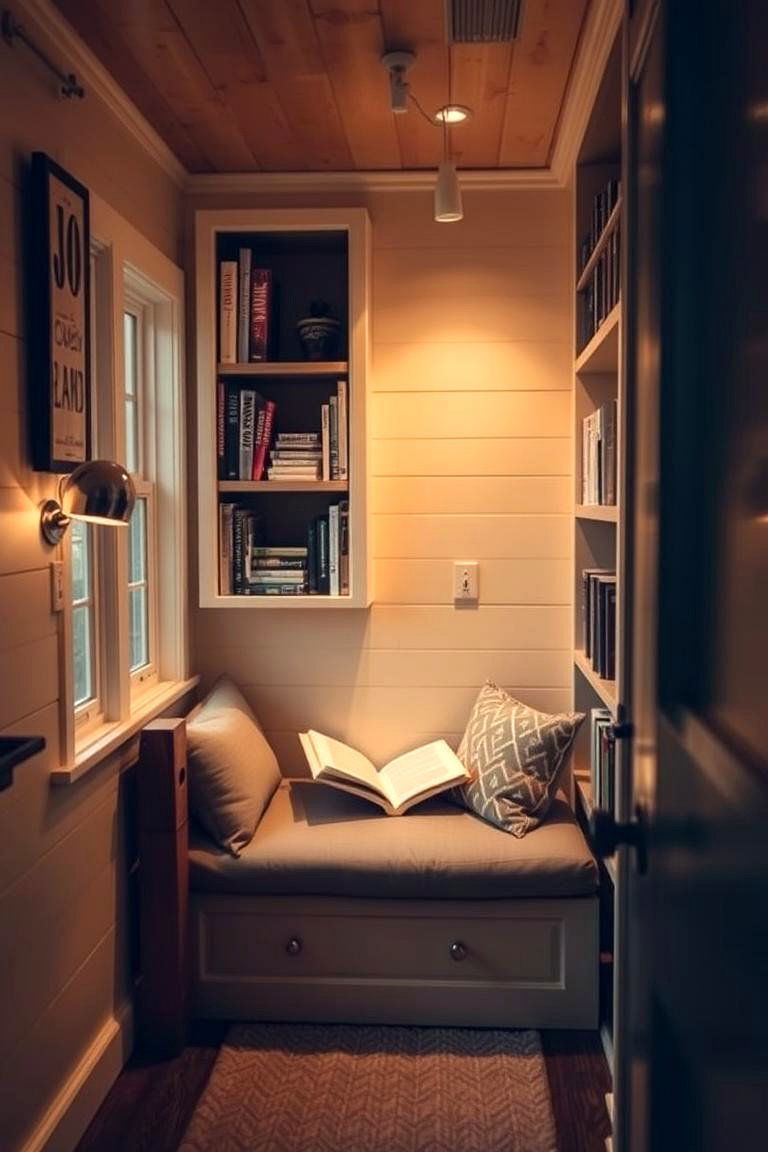
Cozy reading nooks transform tiny house corners into inviting retreats designed for relaxation and inspiration. This idea involves creating a small, dedicated space with comfortable seating, soft lighting, and personal touches that invite you to unwind. Thoughtfully arranged cushions, built-in shelves, and ambient décor elements combine to create a serene atmosphere perfect for enjoying a good book. The design maximizes available space while providing a private sanctuary for leisure. Embracing a cozy reading nook in your tiny home offers a practical yet charming solution for incorporating relaxation into your daily routine, fostering both comfort and creativity.
20. Eco-Friendly Insulation
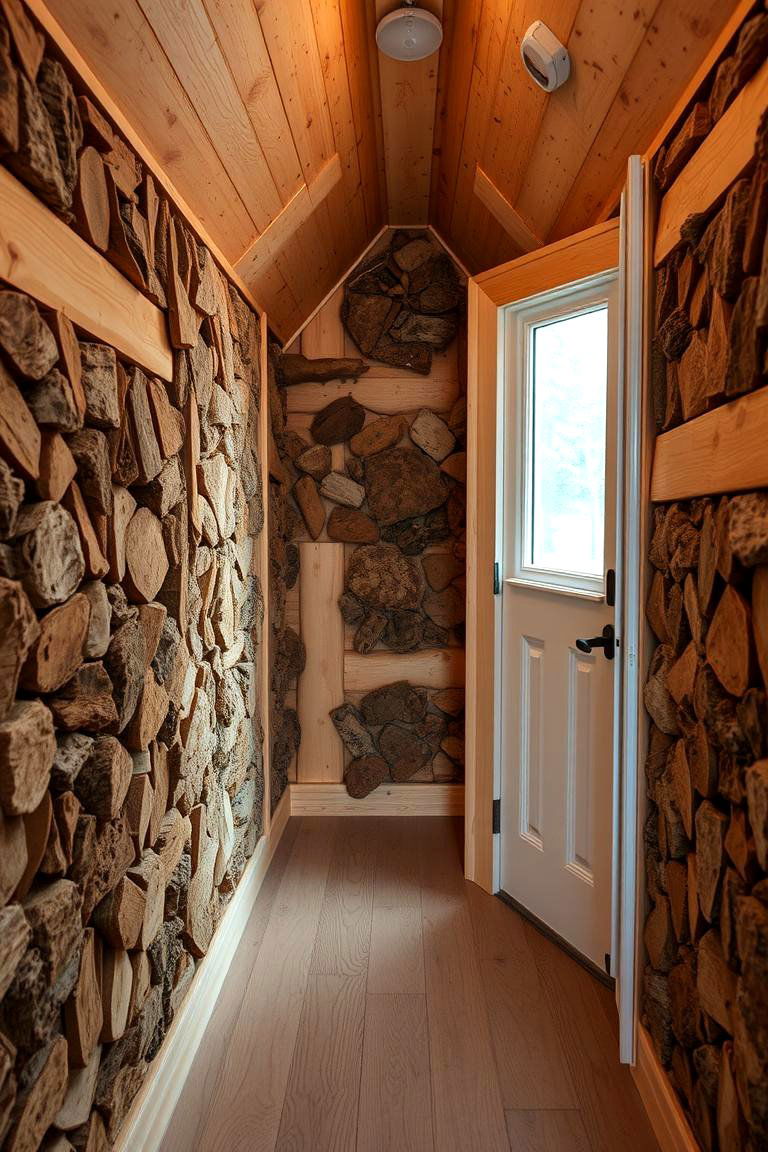
Eco-friendly insulation is a smart and sustainable approach to enhancing comfort in tiny houses. This design idea emphasizes using recycled or natural materials like sheep’s wool, cellulose, or cork to regulate indoor temperatures efficiently. With proper insulation, you reduce energy consumption and maintain a cozy environment year-round, regardless of the weather outside. The insulation materials not only offer environmental benefits but also contribute to a quieter, more peaceful living space by reducing sound transmission. Embracing eco-friendly insulation combines practicality with sustainability, making your tiny house both energy-efficient and environmentally responsible.
21. Built-in Workspaces
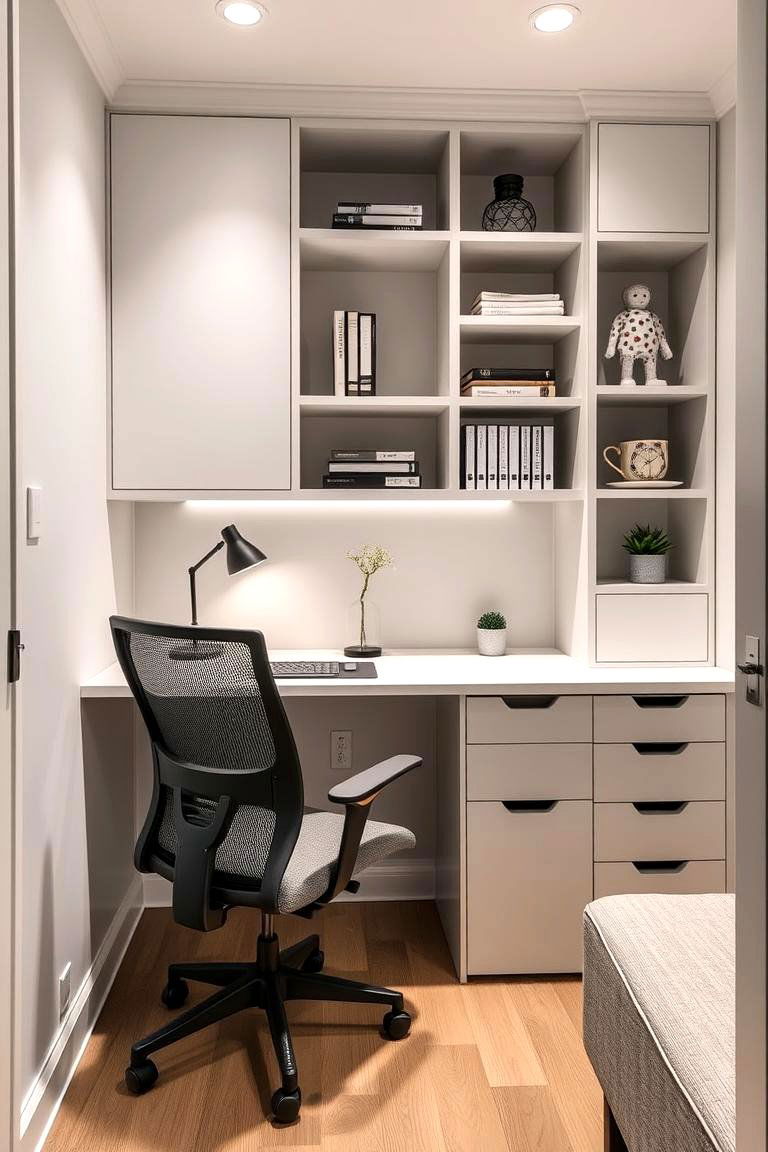
Built-in workspaces are a practical addition to tiny house design, providing dedicated areas for productivity without sacrificing precious living space. This idea integrates desks, shelving, and ergonomic seating into a compact, well-organized corner of your home. The design ensures that work and leisure can coexist in a seamless, clutter-free environment. By customizing these spaces to meet your personal needs, you create an efficient area for remote work, study, or creative pursuits. A well-designed built-in workspace supports a balanced lifestyle by keeping your professional and personal lives harmoniously integrated within your tiny home.
22. Creative Use of Vertical Space
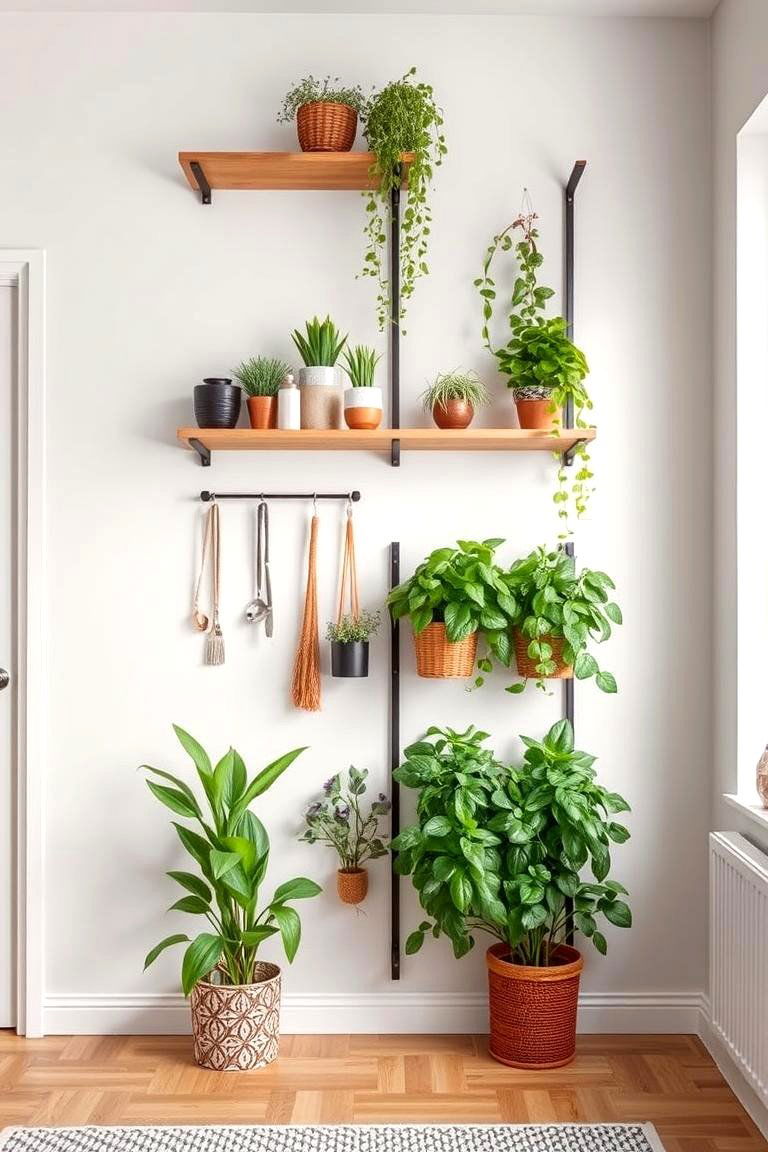
Creative use of vertical space unlocks the hidden potential of tiny houses by utilizing walls and ceilings for storage and design features. This idea focuses on installing tall shelving units, hanging storage, and vertical gardens that draw the eye upward, making the room appear larger. By incorporating clever vertical solutions, you can free up floor space while adding visual interest. The approach encourages innovation and resourcefulness, transforming unused wall areas into practical, decorative elements. Embracing vertical storage and display techniques maximizes space efficiency and infuses your tiny home with a modern, organized feel.
23. Stylish Entryway Solutions
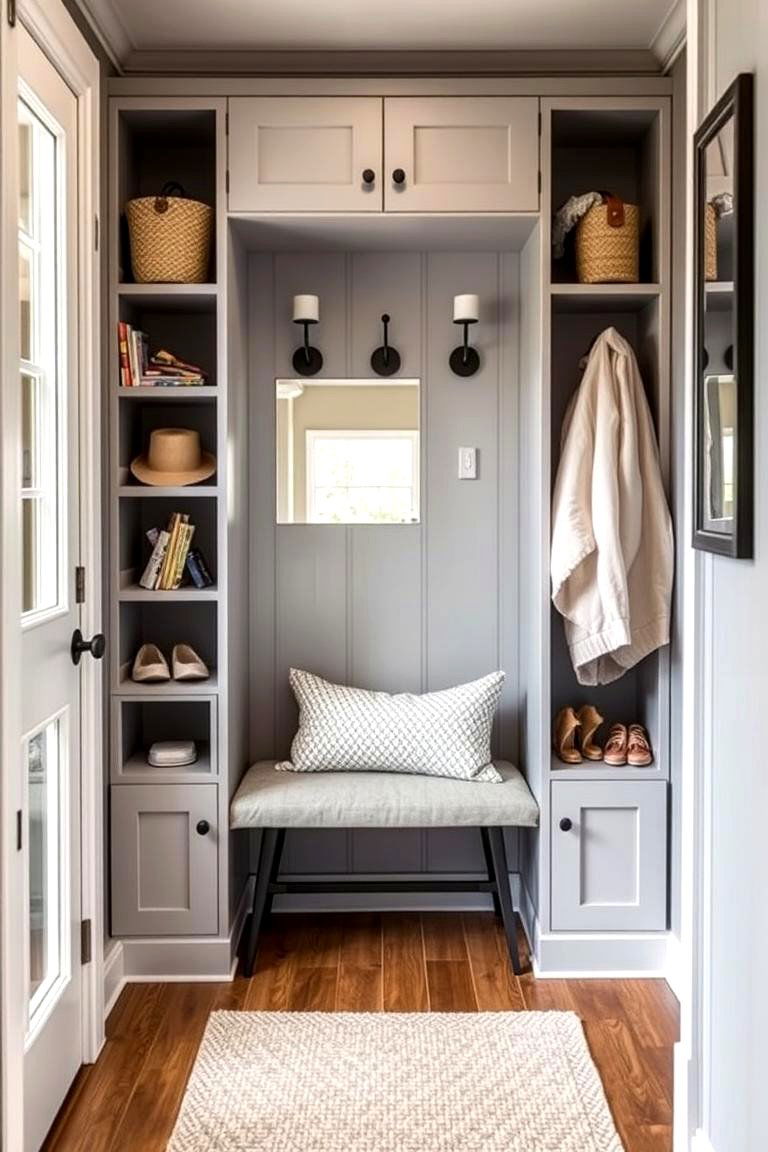
Stylish entryway solutions set the tone for your tiny house by creating a welcoming and organized first impression. This design idea emphasizes integrating built-in storage, decorative hooks, and compact seating into a small foyer area. A thoughtfully designed entryway not only enhances curb appeal but also provides a functional space for coats, shoes, and everyday items. The use of mirrors and smart lighting further expands the area visually, ensuring that even a limited entrance feels inviting and organized. With a focus on practicality and aesthetics, stylish entryway solutions make a significant impact on the overall ambiance of your tiny home.
24. Compact Bathroom Innovations
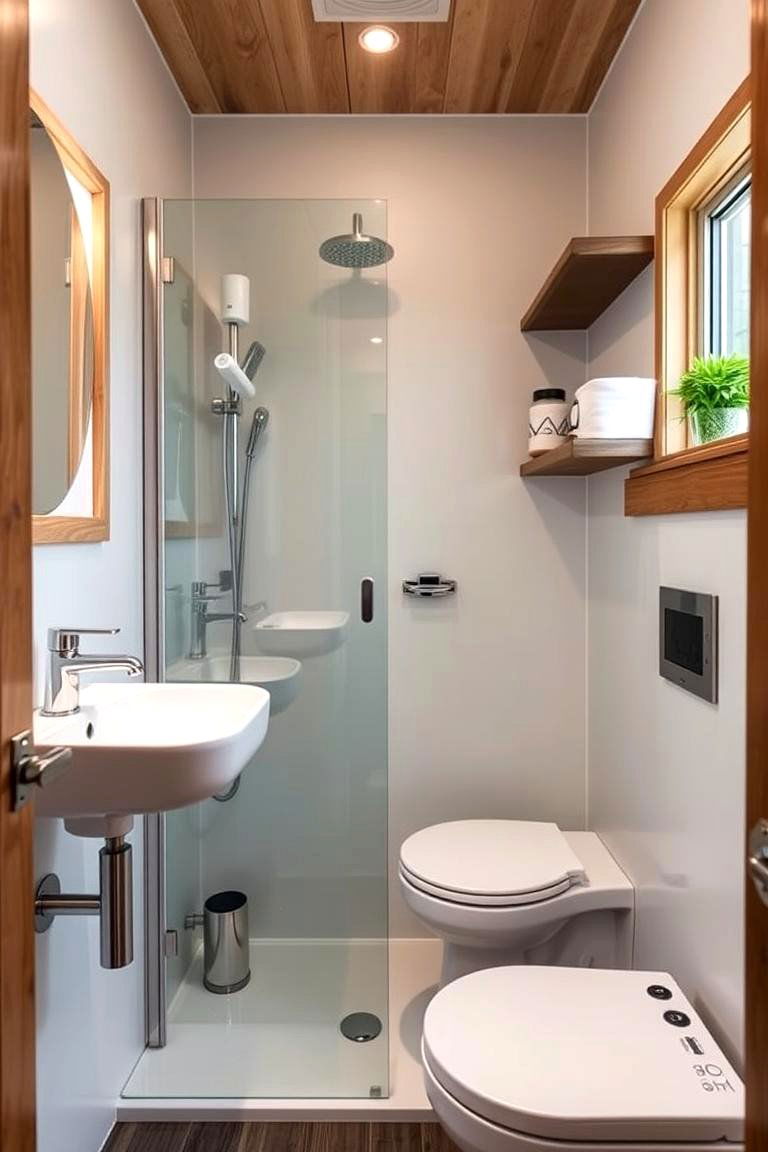
Compact bathroom innovations transform limited spaces into efficient, modern retreats. This idea focuses on incorporating space-saving fixtures such as wall-mounted sinks, compact toilets, and multi-functional shower units. Clever storage solutions and integrated design features ensure that every inch is utilized without compromising comfort. The design often includes reflective surfaces and smart lighting to create the illusion of a larger space. By blending functionality with modern aesthetics, compact bathroom innovations offer a practical and stylish solution that meets everyday needs while elevating the overall design of your tiny house.
Conclusion:
In embracing these 24 Tiny House Design Ideas, you unlock the potential of small spaces with creativity, efficiency, and style. Each concept delivers practical solutions and inspiring touches that transform limited square footage into a personal sanctuary. The innovative approaches—from space-saving furniture to sustainable materials—empower you to live comfortably and sustainably. With thoughtful planning and clever design, your tiny home can become a versatile, energizing haven that reflects both personality and practicality. Let these ideas inspire you to create a home that is truly your own.


